

YOUR COMPANION FOR LIFE IN THE FRENCH COMMUNITY MARCH 2023 PUZZLES • PARLEZ FRANÇAIS • OPINION • ASTRONOMY etcetera Fighting for Fairness International Women’s Day Nature Expert Advice Spring in the Garden and much, much more… PLUS I’M FREE - TAKE ME, KEEP ME! FOOD Cooked to Perfection













Advertise
Commercial adverts: Please see our Media Pack at www.etceteraonline.org

What’s On/Listings: 12€ per 50 words for a guaranteed spot or free (space permitting)
Classified listing: 6€ per 25 words plus 3€ per photo
Property listing: 10€ per 50 words plus 6€ per photo




Code APE 5814Z Edition de Revues et Periodique
Siret 80903463000016. La Présidente G. Feasey

Registered. Le Bourg, 87360 Verneuil Moustiers.
Impression: Rotimpres. Pol. Ind Casa Nova. Carrer Pla de l’Estany s/n. 17181 Aiguaviva (Girona) Espagne. etcetera est gratuit.
While we always do our best to ensure the content in this magazine is given in good faith and businesses are reputable, we accept no liability for any errors or omissions and do not endorse any companies, products or services. Articles written are the personal opinions of the original authors and do not necessarily reflect the views of etcetera magazine.
A Note from the Editors
CONTACT US:
Tel: 05 17 36 15 32
email: editors.etcetera@gmail.com
website: www.etceteraonline.org
17 rue des Chaumettes 86290 St Léomer
etcetera magazine @etceterafrance
Don’t forget the clocks ‘spring’ forward on the last weekend of the month (Sunday 26th, at 2am) and it’s Mother’s Day in the UK on Sunday 19th.
Thank you all for your continued support, we couldn’t do this without you. Wishing you all a wonderful month.
Useful numbers
15 SAMU (Medical)
17 Gendarmes (Police)
18 Pompiers (Fire and also trained in medical emergency)
114 Text-message emergency number for deaf/hard of hearing
119 Child abuse
115 Homeless
113 Drugs and alcohol
112 European emergency not always English
1616 Emergency- Sea & Lake
3131 Last incoming call, key ‘5’ to connect
Orange
English speaking helpline
0033 (0)9 69 36 39 00
Website in English: www.orange.com/en/home
Technical assistance for landlines (French): 3900 (+33 9 69 39 39 00 from abroad)

SFR 1023 or 00336 1000 1023 (Not English)
EDF
8am to 8pm, Monday to Saturday.
+33 (0)9 69 36 63 83 EDF Helpline in English
0033 562164908 (From UK)
05 62 16 49 32 Fax
E-mail: simpleenergywithedf@edf.fr

CPAM - 09 74 75 36 46
Veolia Water Emergency No: 24h/24 et 7j/7
05 61 80 09 02 (press 1 for urgent problems or 2 for a technician)
S.E.P Du Confolens (Water)
05 87 23 10 08 Emergency 24/7
Aéroport Int’l Limoges 05 55 43 30 30
SNCF (train times, buying tickets etc) 36 35
Alcoholics Anonymous
For contact details of meetings in your area including those conducted in English, visit www.aafrance.net
HOSPITALS
05 55 05 55 55 Limoges (CHU)
05 55 43 50 00 St Junien
05 55 47 20 20 Bellac
05 49 44 44 44 Poitiers
05 45 24 40 40 Angoulême

05 49 32 79 79 Niort
05 45 84 40 00 Confolens
Women for Women in France offering support to foreign-born (non-French speaking) women dealing with domestic abuse www.womenforwomenfrance.org

Counselling In France Counsellors, psychotherapists, NLP, CBT etc offering therapy in English to expatriates all over France on www.counsellinginfrance.com
SSAFA France 05 53 24 92 38 email france@ssafa.org.uk
French Health Insurance Advice line CPAM English speaking Advice line: 09 74 75 36 46 (from France)
0033 974 75 36 46 (from other countries). The line is open from Monday to Friday, from 8:30 a.m. to 5:30 p.m.
NHS website : www.nhs.uk/using-thenhs/healthcare-abroad
www.ameli.fr
No Panic France Helpline: No Panic UK helpline:
0044 1 952 590 545 11h - 23h (French time) 7/7 www.nopanic.org.uk /nopanicfrance@orange.fr
English-speaking Crisis Line
SOS- HELP 01 46 21 46 46 3pm-11pm 7/7
British Consulate in Paris 01 44 51 31 00
British Consulate in Bordeaux 05 57 22 21 10 www.ukinfrance.fco.gov.uk/en/
Credit Agricole English Speaking Helpline Charente (residents only) 05 45 20 49 60


3 A note from the editors 4 What’s on 8 Craft 10 Language 13 Opinion 16 Food 23 Business 28 Health 31 Garden 38 Free time 40 Astronomy 42 Angling 44 Nature 48 Latest news 49 Home & specialist 51 Getting connected 54 Artisans 61 Motoring & removals 63 Property 66 Classified Contents
Photo credits: Bigstock, Pixabay, Shutterstock, Dreamstime Welcome to the March edition of etcetera magazine. Finally, it’s
the start of spring! The days will be getting longer and we all start to come out of hibernation!
Annual subscription France 55€ / UK 55€ Card payment by telephone Subscribe
Please download the pdf from this link now: www.paysruffecois.fr/sante/guide.pdf Print 2 copies - one for your home and one for your car - it could save a life. NO international code needed from UK mobiles hello & welcome
Gayle and Sam
etcetera 3




4 etcetera listing


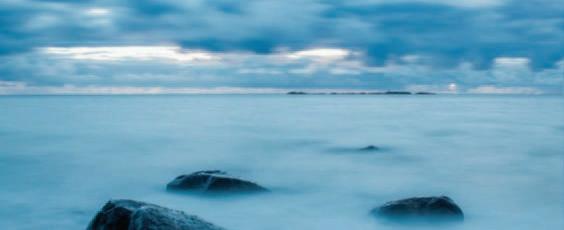








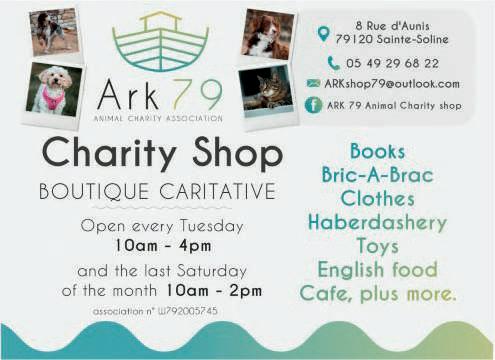



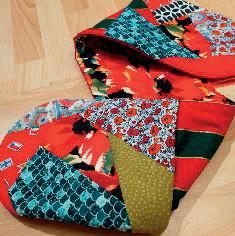

etcetera 5 listing



listing ‘ 6 etcetera





etcetera 7 STRAVAIG MOTORHOMES SCOTLAND Motorhomes Wanted � Collection from your location in France or Europe � Right hand drive or left hand drive � UK registered / European Registered � Cars also considered � Plus - Luxury motorhomes FOR RENT for a 2023 Scottish road trip www.gostravaig.com admin@gostravaig.com UK 0044 (0) 7979 816 837 or FR 00 33 68 12 13 557
Sarah is the author of craftinvaders.co.uk where she blogs about her original craft tutorials, recipes, foraging, and developing wellbeing through being creative, spending time outdoors and connecting with nature
 BySarahWhiting
BySarahWhiting
Easy Wet Felted Easter Egg Owl

SINCE
Wet felting is the process of combining layers of wool fibres into one flat piece of felt fabric. Wet felting uses water, soap and agitation to interlock and matt wool fibres together. The resulting material can be cut and used for all sorts of projects.

Materials
Pure wool roving (not acrylic), colours of your choice


Wooden balls (or something similar for the form)
Soapy water in a spray bottle
Vinyl gloves
Old pair of tights or a sock
Steps
1. Start by covering the egg (or whatever form you have chosen to use, just remember it has to go in the washing machine!) with two layers of wool roving.

2. Then dampen the wool with hot soapy water. Already at this point you will probably feel the fibres start to tangle and tighten around the wooden egg as you rub it between your hands.



3. Next, add the detail you want using different colour wool fibres, spraying them all with soapy water and using your fingers to smooth them into place. I find wearing vinyl gloves
Equipment - Washing machine and detergent
throughout the process useful, I think the way they glide over the fibres without tugging at them makes the process easier.
4. Once you are happy with your design, place the little owl into the toe cut from a pair of tights and secure it with an elastic band or tie a know in the tights to keep the owl in place. Place it into the washing machine with a detergent capsule, I usually chuck in some towels as well and ran it in a hot (60C) wash.
5. You might find that you need to wash it again, it all depends on the type of fibre you are working with!
8 etcetera
craft
EASTER IS FAST APPROACHING, I DECIDED TO TRY AND FELT A LITTLE OWL USING A WOODEN EGG AS MY FORM
MR. PIANO MAN
TUNING & REPAIRS
Never throw away your treasured piano, until we have seen it! We have repaired and reconditioned pianos in England and in France for over 40 years, from mini pianos to concert grands. Many years of experience.

Telephone: 05 45 21 16 13

Email: mr-piano-man@hotmail.com

sBEAUTIFUL GIFTS & CARDSs


GREAT IDEAS FOR EASTER

Hunting for Calorie-Free Eggs? and a Cracking Card?
We’re ‘Pâqued’ to the Rafters!
sDELICIOUS HOME-BAKINGs
YummyEasterEggCupcakes, Scones,Brownies,FruitCake, LemonDrizzleCupcakes…



ServingWarmWelcomesSince2004!
Encadrement d’Art
1 Rue du 19 Mars 1962 87150 Oradour sur Vayres
Picture framers to La Galerie de Gabriel
Tues / Weds / Thurs / Fri: 10.00-12.00 : 3.00-7.00 Sat: 10.00-12.00 : 3.00-6.00 WWW.CHEZCHRISTIES.FR 05.49.50.61.94 Fbk: ChezChristie’sGençay # chezchristiesgencay Christie’s EI - GENÇAY (86) behind la Mairie - Siret: 47876969800018 Browse our selection of unique gifts, enjoy a meal from our new menuindoor & terrace seating available. BESPOKE by Denise can also be contacted directly on 06 75 89 95 55
John Selley EI - 09 77 00 66 38 Email: encadrement.oradour@gmail.com





BESPOKE JEWELLERY, REMODELLING, REPAIRS


etcetera 9 craft
Former BBC London Tuner Complete piano renovations (grands specialist)
Siret 51033234100017
T i Siret: 89235834200020
Custom Framing for Arts, Crafts & Memorabilia EI
Christie’s
view our collection, please visit our FB page: www.facebook.com/bespokedenise.eyre or website www.bespokebydenise.com Open Tue-Sat DENISE EYRE (EI) AT THE LEMON TREE CAFÉ 71 Grand Rue 79190 Sauzé Vaussais 05 49 07 78 22 Advertise Your Business From just 39€ ttc per month New edition - every monthContact Sam or Gayle 05 17 36 15 32 editors.etcetera@gmail.com
PLEASE NOTE: WE’LL BE CLOSED FROM TUES 7th MARCH REOPENING ON TUESDAY 21st MARCH
To
Français
French conversation, vocabulary & traditions
Ma voiture est en panne !
History / Histoire :
Le beau temps revient. Le printemps est à nos portes. Tout cela nous donne envie d’aller faire des balades en voiture pour nous promener, de prendre peut-être quelques jours de vacances… Mais avant de partir en voiture, il faut vérifier quelques petites choses. Il ne faudrait pas tomber en panne en vacances !
Les pneus, sont-ils bien gonflés ? Les essuie-glaces, fonctionnent-ils bien ? Les niveaux d’eau et d’huile, sont-ils bons ? Les freins, freinent-ils correctement ? Y a-t-il assez de produit lave-glace dans le bidon ? La batterie, est-elle encore assez puissante ? Le pare-brise, est-il propre ? Les lumières, fonctionnent-elles toutes ? La vidange, quand a-t-elle été faite ? Les bougies, sont-elles encore bonnes ? Y a-t-il assez de liquide de frein ? Le frein à main, marche-t-il bien pour garer la voiture ? Est-ce qu’il y a de l’essence dans le réservoir ? Est-ce que la roue de secours est bien gonflée ?
Est-ce que nous avons bien le triangle rouge de signalisation en cas de panne, dans le coffre ? Est-ce que les gilets jaunes, en cas d’urgence, sont dans la voiture ? Avons-nous tous les papiers avec nous : le permis de conduire, la carte grise (la carte d’immatriculation du véhicule), l’attestation verte d’assurance, la vignette verte pour l’assurance collée sur le pare-brise, la vignette du contrôle technique collée aussi sur le parebrise, un constat à l’amiable (bleu) en cas d’accident dans la boîte aux gants ?

Si nous avons tout vérifié, alors, allons faire un tour !
Parfois, une panne n’en est pas vraiment une ! Jeanne est une nouvelle conductrice, c’est-à-dire qu’elle vient d’obtenir son permis de conduire.
D’après Jeanne, sa voiture est en panne. Elle appelle donc son ami Pierre au téléphone pour l’aider à la dépanner.
Jeanne : Allô ? ! Pierre ? Ma voiture est en panne : elle ne veut plus avancer.
Pierre : Tu as encore de l’essence ?
Jeanne : Oui, enfin, je crois… J’ai fait le plein il y a deux jours.
Pierre : Tu as vérifié les pneus ? Ils sont peut-être à plat.
Jeanne : Attends… non, ils ne sont pas à plat.
Pierre : Et la batterie ? Est-ce que le petit voyant carré rouge avec un plus et un moins est allumé ?
Jeanne : Non, je ne crois pas. Il y a un voyant orange allumé !
Pierre : À quoi ressemble-t-il ?
Jeanne : C’est un fil qui fait trois boucles. Ah ! Il s’est éteint ! Oh ! Il y a un autre voyant qui est allumé !
Pierre : C’est quoi ?
Jeanne : C’est une sorte de demi-cercle avec trois traits et une vague au milieu.
Pierre : Hein ? ! Ah ! Les phares antibrouillard.
Jeanne : Ah bon ? Elle a des phares antibrouillard ma voiture ?
Pierre : Oui. C’est en série sur toutes les voitures, comme les clignotants. Dis, il n’y a pas un voyant rouge allumé qui ressemble à des vagues, par hasard ?


Jeanne : Non… Il n’y a pas d’autre voyant allumé. Ah ! Si, il y a un voyant rouge : Un P dans un cercle.
Pierre : Jeanne, tu as desserré le frein à main ?
Jeanne : Ah ? Non ! J’ai oublié ! Merci ! Maintenant, c’est sûr, la voiture va pouvoir avancer !
Pierre : Oh là là !!!
Bons moments de promenade ! Bon courage ! Et à bientôt !
Élargissez vos horizons avec CONTINENTAL HORIZONS ! Broaden your horizons with CONTINENTAL HORIZONS!
Isabelle works for CONTINENTAL HORIZONS Language Centre in L’Isle Jourdain 86. She is a specialist Teacher of French as a Foreign Language and has more than 25 years’ experience. Do not hesitate to contact her on 06 20 10 34 49 or
Isabelle
10 etcetera language/assistance Parlez
être à nos portes to be round the corner avoir envie de to feel like
une balade a stroll
se promener (refl. verb) to go for a walk / to go around
vérifier to check
tomber en panne to breakdown
un pneu / des pneus a tyre / tyres
gonflé
inflated
un essuie-glace a windscreen wiper
fonctionner
to function / to work
un niveau / des niveaux a level / levels
une huile
an oil
un frein a brake freiner to brake
un produit lave-glace a windscreen cleaning product
un bidon a can
une batterie de voiture a car battery
puissant (adj.) powerful
un pare-brise a windscreen
propre (adj.) clean
sale (adj.) dirty
une lumière a light
la vidange
oil change / car service
une bougie (de voiture) a spark plug
le liquide de frein the brake fluid
le frein à main the handbrake
garer une voiture to park a car
l’essence (f)
the petrol
le réservoir
the petrol tank
le triangle rouge de signalisation the red triangle in case of breakdown

le coffre d’une voiture
the car boot
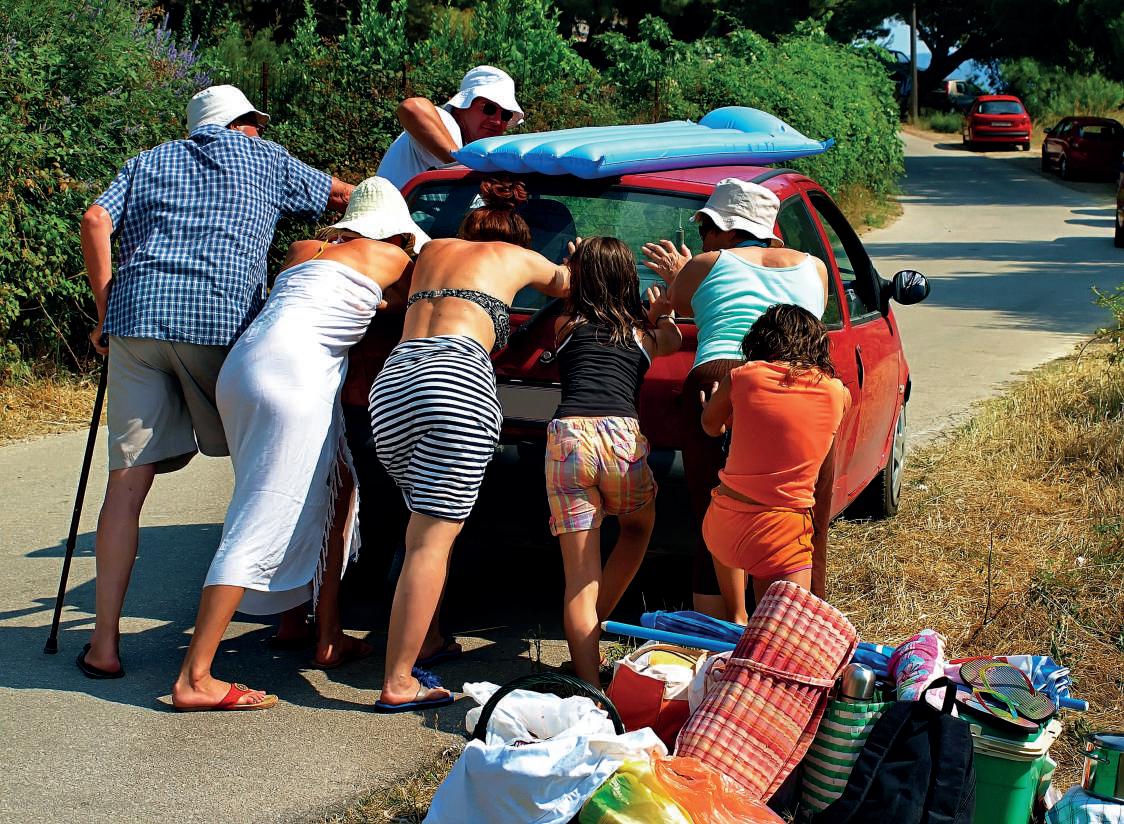
un gilet jaune a yellow jacket
une urgence an emergency

les papiers (m, pl)
the paperwork
le permis de conduire
the driving licence
la carte grise / la carte d’immatriculation du véhicule
etcetera 11 language & assistance
Get the Apprenezvocab! vocabulairele !
the French log book / equivalent UK V5

une attestation verte d’assurance a green insurance certificate


une vignette a sticker le contrôle technique the French MOT
un constat à l’amiable a blue document to fill in, in case of an accident, to give to the insurance la boîte aux gants

the glove box
faire un tour to go for a ride (here) être en panne to be broken down (for a car or a machine)
parfois sometimes une panne a breakdown
un conducteur / une conductrice a car driver
d’après Jeanne according to Jeanne dépanner to help out / to repair avancer to go forward
Je crois. – croire (verb) I believe. – to believe faire le plein (d’essence) to fill up (with petrol)
à plat flat (for tyres, car battery…)
un voyant a warning light allumé (adj.) lit up
ressembler à (verb) to look like un fil a thread / a wire
une boucle a loop éteint switched off une sorte de a kind of un demi-cercle half a circle un trait a straight line une vague a wave au milieu (de) in the middle of un phare antibrouillard a fog light
c’est en série it comes as standard un clignotant an indicator par hasard by any chance

un cercle a circle


desserrer le frein à main to release the handbrake

J’ai oublié. – oublier (verb)
I forgot. – to forget
C’est sûr
It is certain
FRENCH LESSONS FOR FREE with experienced French teachers (if eligible) Groups - Private tutoring - E-learning Contact Alain 05 55 32 41 76 / 06 37 76 54 98 alain.rio@hvformations.org http://hvformations.org Siret: 824417364 00018 FRENCH LESSONS ONE-TO-ONE / GROUPS At Dino’s in Champagnac la Rivière (87150) or ONLINE CLASSES Translations & Administrative Assistance Sandrine Durand Siret : 488 296 450 00015 05 55 78 16 21 / 06 83 07 66 98 r.sandrine.durand@orange.fr PLUS Language School Secretarial and Administration Services Certified Legal Interpreting & Translating Coaching 15 Place d’Armes 86150 L’Isle Jourdain Tél. 05 49 84 17 73 Email: continentalhorizons@free.fr Established Since 1997 EI siret 450 833 009 00027 12 etcetera
language/assistance
The Tree of Life

“Down this road on a summer day in 1944, the soldiers came.” Spoken with an eerie calm by Laurence Olivier, these words marked my first awareness of Oradour-sur-Glane. They accompanied the opening images of ITV’s landmark documentary series “The World At War”, first shown in 1973. I had no clear idea then of where this skeletal, never-rebuilt town stood; I never imagined I would ever visit, let alone one day live an hour or so away. But allow me to relate a tale which links Oradour in an unexpectedly uplifting way to the west of Scotland and the Isle of Man, via the hair-raising wartime experiences of a gentleman I am proud to have briefly known.
The seven-man crew baled out into the starless night as their crippled aircraft blazed its way to the ground
After a couple of nights sleeping in a forest near Bar-le-Duc, hunger drove Denys to approach a local workman. In Germanoccupied France the penalty for failing to report seeing an “aviateur anglais” was severe; to feed, clothe and hide one risked execution for a whole family. Yet Denys was taken in and over the following months hidden in villages and farm buildings by a succession of defiantly courageous French people. Escape back to Britain being out of the question, he learned to speak French and was provided with a forged identity card in the name of Denis Lebenec from Brittany, to explain his very different accent.
White lives in south Indre with his wife, too many moles and not enough guitars

recovering ammunition drops and once derailing a German supply train.
When D-Day finally came, Denys had been in hiding for nine months. More airmen, British, American and Australian, were found and concealed. A pair of local brothers at one point had fourteen men hidden on their farm. Appalling reprisals were carried out by the retreating German army but eventually Allied forces liberated the area. Exhausted and suffering from scabies, Denys was returned home to Liverpool after twelve months in hiding. A decade after the war Denys Teare published his memoir “Evader”. The book was republished in the mid-1990s, around the time I met him through his connection to my sister-in-law’s family. Denys inscribed my copy and gave me several photographs taken over the years on his annual return to Revigny-sur-Ornain, the village whose brave inhabitants had saved his life. The pictures feature many of the friends he made during the war and show Denys laying a wreath at annual commemorations. He later retired to live in the Isle of Man.
Denys Teare grew up near Liverpool, surviving the destruction of his parents’ house in the German bombing of 1941. He joined the RAF and a couple of years later was flying his 15th mission as a crew member on an Avro Lancaster bomber returning from a night attack on the German city of Mannheim. Denys was just 21 years old. The massive barrage of ground defences had disabled two of the plane’s engines and somewhere over eastern France a fire took hold. The sevenman crew baled out into the starless night as their crippled aircraft blazed its way to the ground. Although all survived they would not meet again until after the war ended.

With the German army commandeering virtually all agricultural produce, food shortages were severe but at each hiding place local people made sure Denys was fed, (one couple told him that when they were down to their last potato, it would be divided into three). In return, he helped out working on numerous farms but whereas each family knew only their next contact in the sequence, Denys could identify the entire chain. His capture would have been catastrophic. It came terrifyingly close when local Resistance organiser Robert Lhuerre was arrested in his office by the Gestapo; Denys was one floor above, hiding in a stationery cupboard. Lhuerre was later shot. Denys met the head of the area Maquis and became an active operative, assisting in
At this point my friend Alan from North Wales enters the story. When he first visited us here in France, Alan asked to see Oradour-sur-Glane. During our visit he randomly picked up three acorns from beneath a gnarled oak tree standing near the church, planting them in pots when he was back home. Later, when Alan was in the Isle of Man for the TT motorcycle races, I arranged for him to meet Denys. In 2022 Alan’s little oaks had matured. He has kept one at home and planted one in a Dumfries woodland at a favourite spot of his late mother’s. The third he took to the Isle of Man and with local permissions, picked out a location the airman and Evader Extraordinaire would have loved. I like to imagine Denys Teare’s oak tree one day closing this circle, spreading its branches to offer anyone in need shelter from the storm.

opinion etcetera 13
Brian
Embracing Equality
ACROSS THE WORLD, THE 8TH OF MARCH CELEBRATES
INTERNATIONAL WOMEN’S DAY, RAISING AWARENESS AND TAKING ACTION FOR WOMEN'S RIGHTS AND GENDER EQUALITY
Women have been facing barriers throughout history, seeking opportunities that would give them an equal footing in the world. Just decades ago, inequality was widespread - in the workplace, in universities, and even in our homes. Thankfully since then, the lives of many women and girls have improved enormously in many aspects. In wealthier and developing countries, many now have full access to education, are getting better jobs, and acquiring legal rights and protections, but large gender gaps remain. Women still get fewer opportunities and are more likely to have to deal with bias on a day-to-day basis. In only January of this year, French media reported concerning figures about situations girls and women
are facing here in this country, with sexism reported as rife in some areas. There is still much to do.
How did it all start?
The battle for gender equality was raging in the early 1900s. Women were campaigning for better pay, shorter working hours and suffrage. In 1909 in the United States, the earliest form of National Women’s day was celebrated.

was raging in the early 1900s
8th March
By Gayle Feasey
In 1910 the second International Conference of Working Women was held in Copenhagen. Clara Zetkin, a German women's rights activist, called for an international women’s day, allowing
women to have a greater voice to further their demands for equal rights. Of the 100 women present, who represented 17 countries in total, all of them agreed. And so it came that International Women’s Day was celebrated for the first time in March 1911, in Germany, Austria, Switzerland and Denmark and in 1913, the date was fixed as the 8th of March. It wasn’t until 1975 that the United Nations celebrated it, with France officially joining in 1982.
Celebrating accomplishments
Throughout history, so many women have considerably changed the world as we

14 etcetera
The battle for gender equality
know it today. Women have continually impacted social, cultural, economic and political developments throughout history. While we have progressed in many areas, we are still living in a world that has to deal with gender bias and discrimination, so achievements must be acknowledged, appreciated and celebrated.
The Pay Gap
In France, women on average are earning just below 16% less than men (a similar figure to the UK) despite women statistically having more qualifications. Friday the 4th of November last year marked the moment in France when female workers effectively worked for free until the end of the year, with 16% of the working year remaining. Known as Equal Pay Day, the date is calculated each year according to the most recent gender pay gap figures from the EU statistics agency, Eurostat. As you can imagine, the data varies from country to country. Women in Luxembourg reached their last ‘paid day’ in late December, just hours before the year ended, however, their Latvian sisters had worked for nothing since early October.
companies has a female running it — Engie, the utility company with CEO Catherine MacGregor at the helm.
Societies That Value Men and Women as Equal Are Safer and Healthier for All
In 2011, the World Bank reported that evidence from countries including Brazil, China, India, South Africa and the UK all showed that when women control more household income - either through their earnings or through cash transferschildren benefited as a result of increased spending on food and education. In India, when giving power to women at a local level, they saw a greater provision of public goods, such as water and sanitation.

Friday the 4th of November last year marked the moment in France when female workers effectively worked for free
What about Men?
The lives of men are just as strongly influenced by gender as those of women. Societal norms and perceptions of masculinity and expectations of men as leaders, husbands or sons create demands on men and shape their behaviour. Men are too often expected to concentrate on the material needs of their families, rather than on the nurturing and caring roles often assigned to women.
▪ Only 19% of the world’s technology workforce are women
▪ It’s reported that women only received 4% (yes, 4%, that’s not a typo) of sports media coverage
▪ It is estimated that over 2 billion women on this planet do not have the same employment options as men
▪ While human trafficking affects men and women, women and girls make up over 70% of the world’s human trafficking victims
▪ Research shows that in general, women receive worse medical care than men. There are many reasons for this, including lack of education and lower incomes. Sexism in the medical research community also leads to worse care. Imagine if men had periods or went through the menopause?! How different wouldthings things be now? Also, diseases that affect women more than men (such as chronic pain conditions) aren’t as well-researched.
The World Economic Forum issues a Global Gender Gap Report each year, ranking 144 countries according to the disparity between women and men in sectors such as education, health, the economy and political life. While its most recent report shows that the gap is narrowing, sadly the progress has now slowed. The pandemic played a big part in this. If we look at the current rates, it will take 100 years to close the gender gap. The economic gender gap remains the most persistent and is unlikely to be closed for another 217 years.
So, while great achievements and progress have been made, women are still not equal in number in business and politics.
According to data from 2021, women in France only hold 34.6% of senior and managerial positions, which is a lower rate than in the United Kingdom at 36.8% and the U.S. at 42%. Yet, France and 25 other nations take first place in rankings regarding “educational attainment for women.” Despite this achievement, only one company out of France’s 40 largest
www.womenshistory.org
Founded in 1996, the National Women’s History Museum (NWHM) is an innovative online museum dedicated to uncovering, interpreting, and celebrating women’s diverse contributions to society.
www.womenforwomenfrance.org
This new Multilingual Online Resource Centre is designed to support anyone faced with domestic abuse in France. Whether you are
For a society to work at its best, you need both genders to make the decisions. When women receive the same education and job opportunities as men, they can improve any organisation they join. Studies show that diversity of all types (gender, race, sexual identity, etc) increases an organisation’s productivity and innovation.

The more equal and diverse our society is, the better. This is why celebrating International Women’s Day is so important. We need more females in politics, more heading corporations and more making important social decisions. You only have to look at many board meetings and conferences around the globe and you’ll often see hoards of males. This isn’t a true representation of our society. Yes, it’s changing, but it’s not enough!
The more attention this day gets, the more the message will be received and heard globally. It’s also an opportunity for us all to reflect on our own lives - women have been discriminated against for years so it’s easy to have biases and not even know it.
French or not, you will find tools and information in our dedicated step-by-step guides, including contact details for relevant support services near you.
www.heforshe.org/en
HeForShe invites men and people of all genders to stand in solidarity with women to create a bold, visible and united force for gender equality. Working together, building businesses, giving back to their communities.

▪ Globally women's education, health and the violence against them is worse than that of men. In both developing and rich countries, women are much more likely to suffer domestic abuse.
▪ Research shows that gender equality is linked to peace, even more so than a country’s GDP or level of democracy. When a country addresses major areas of gender inequality like education and employment, it fosters peace.
"Equality between men and women exists when both sexes are able to:
Share equally in the distribution of power and influence
Have equal opportunities for financial independence through work or through setting up businesses
Enjoy equal access to education and the opportunity to develop personal ambitions, interests and talents
Share responsibility for the home and children and are completely free from coercion, intimidation and gender-based violence both at work and at home."
(Source: unfpa.org)
women etcetera 15
Tempting steak and vegetables; The Maillard Effect has been enhanced by using a ribbed skillet, which varies the temperature in stripes across the food
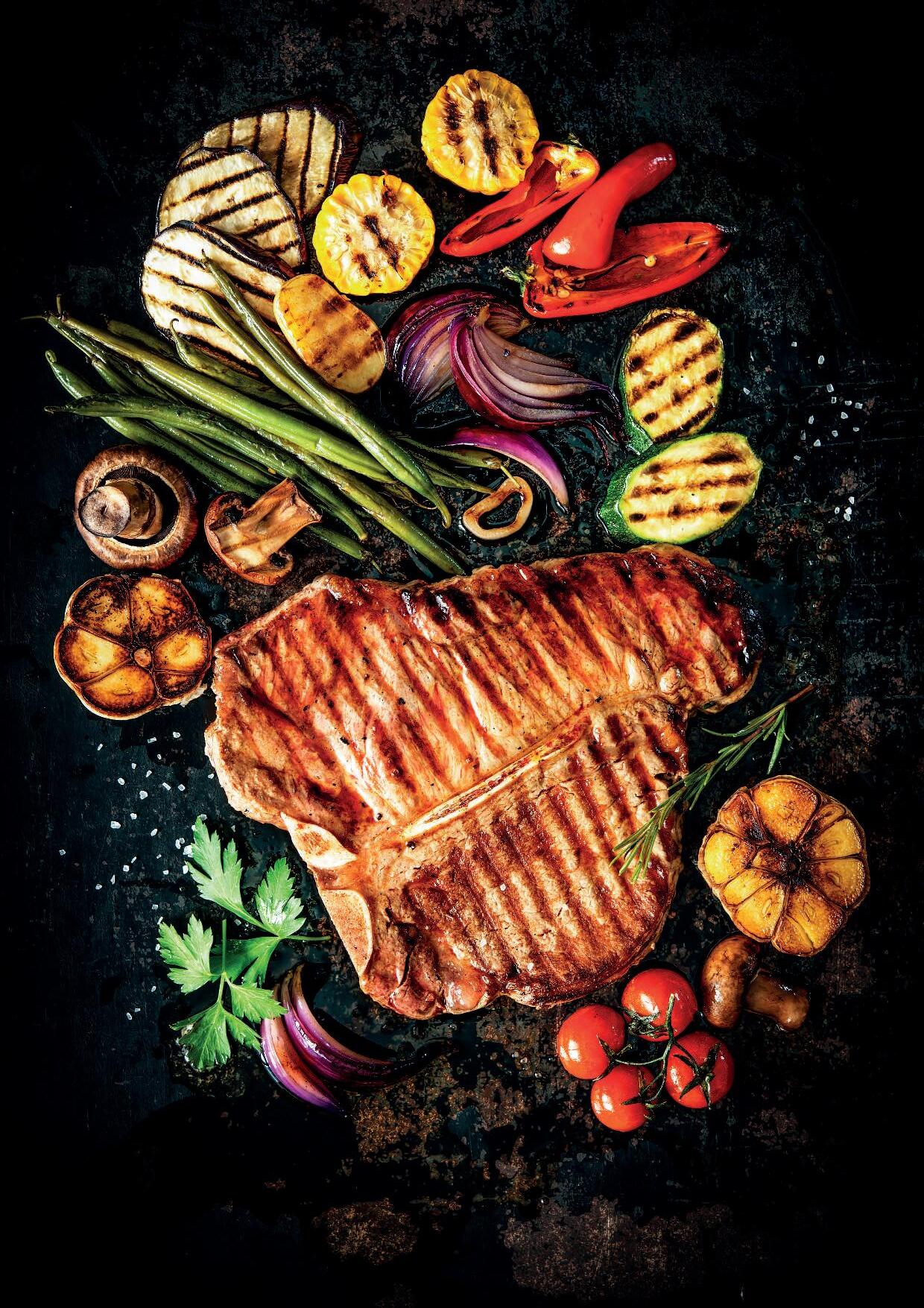
A Culinary Phenomenon
WHY DO WE BOTHER TO COOK? THE SHORT ANSWER IS, TO MAKE OUR FOOD TASTE BETTER!
That is not, of course, universally true. Many vegetables and fruit are far more delicious and nutritious when they are raw. I myself dislike cooked carrots with a passion, but will happily eat a young raw carrot, whose sweetness and texture can be delightful. But many vegetables do need skilful cooking – try eating a raw parsnip or a butternut squash! Some, like flageolet beans, are actually poisonous unless adequately cooked.
The advantages of cooking
Meat, of course, should always be cooked. I know that a well-prepared steak tartare is not cooked in the strict sense, but it is chopped to tenderise it and very carefully prepared and treated so that the meat “cooks” chemically in the juices of the other ingredients. Salmon, likewise, can be “cooked” in acid such as lemon juice, although with the increase of diseases and parasites resulting from salmon farming, some cooks are advising against this. But consider this: unless you were at the furthest limits of hunger, would you take a piece of raw meat – or a raw fish or crab – and eat it? I have always felt that the first person ever to eat a lobster must have been desperately hungry!
to achieve the result you want. Sometimes you need a slow, low heat; watertemperature cooking can produce splendid results, especially for vegetables, but there is one result of cooking that requires high temperatures to achieve, and that is the Maillard Reaction.
You may never have heard of this, and it sounds awfully scientific – and it is – but you will know it as “browning”. One of the most important results of good cooking is that the result should look and smell appetising, and that is nearly always down to the Maillard Reaction.
ByMikeGeorge
Mike George is our regular contributor on wildlife and the countryside in France. He is a geologist and naturalist, living in the Jurassic area of the Charente

produced during the roasting of the cereal grains.

I’ve never heard of this, and I’m a good cook…
It is a very complex class of reactions, and was first described by the French physician and researcher Louis Camille Maillard
Cooking meat has a number of advantages. It improves the texture of the meat. It tenderises the meat, and renders the fibres more easily digestible (though some restaurant and school meal chefs can produce the opposite effect!). It kills bacteria in the meat, and destroys enzymes that can promote the decay of the meat, thus extending the meat’s “shelf-life”. Some things have to be cooked. You cannot mix together flour, butter, eggs, and sugar, then serve that up to your guests at teatime and describe it as cake. It must be cooked first, to initiate the chemical reactions that result in the cakey texture and flavour.
The Maillard Reaction
In the art of cooking, it is vitally important to balance temperature and cooking-time
Most food, especially meat, contains a mixture of proteins and sugars, and the Maillard Reaction – which is really a whole suite of reactions, not just one - is the interaction of these two classes of chemicals to produce colourful products and pleasant-smelling volatiles that make our food seem tempting. It is a very complex class of reactions, and was first described by the French physician and researcher Louis Camille Maillard in 1912. He realised its complexity, and researchers are still checking on the finer points of the many biochemical reactions that different conditions of preparation and combinations of proteins and sugars can produce.
The reaction, of course, is not the same every time. Different foods have different proportions of proteins and different short-chain sugars present, and variations of temperature change things further. You can usually tell, just by sniffing, the type of meat that is cooking: beef’s rich savour, chicken’s cheeky scent, fish’s subtle tang. These are all the result of slight differences in the reactions taking place. And it is not just the meat. The brown tan on wellcooked chips, the colour of potato crisps, all owe their existence to the Maillard Reaction. And cakes and biscuits owe some of their subtle flavours to it, too. Even beer is coloured brown and flavoured by the products of the Maillard Reaction,
Of course, this is not what cooking is all about. Even the most esoteric chefs do not usually consult textbooks on protein biochemistry when they cook, and you most certainly will not. I began my science training as a chemist, and I find most of the Maillard formulae incomprehensible! So how do we harness this complex toolkit to our service? What we normal mortals do is learn from our own experience, and the teaching of other cooks, (in most cases our parents) on how to treat food to produce the end result we seek.
There are certain things that are necessary for the Maillard Reaction to work. Firstly, the cooking temperature must be high. At least 150°C (300°F) is required to initiate the reaction. Any quantity of water on the meat and the reaction probably will not take place, since the water will hold the temperature down at 100°C until it has all boiled away. That is why it is usually recommended to dry any meat you want to brown between sheets of absorbent kitchen paper. Rubbing salt onto meat will only allow the meat to brown if you do it immediately before cooking, since any salt trapped in the tissues will attract water and inhibit the reaction.
What about microwave ovens?
It is also the reason that a microwave oven will not brown meat. Many cooks who switched to microwave cooking in the early 1980s, when the devices became small enough to fit in an average kitchen, found that while meat would cook quite adequately, it would emerge with a corpselike pallor! Microwave ovens heat the food by exciting liquid water in the food until it heats to near-boiling point. This happens just below the outer layer of the lump of the food, and the heat travels through the mass to cook it throughout from inside, but of course, because it is water that is doing the heating, it will not rise above 100°C and the Maillard Reaction will not start. So, if you are cooking meat from raw, it will not turn brown. That is why the
etcetera 17
food
more expensive microwave ovens soon included a grill facility to provide higher heat to the meat’s surface to brown it.
Is it all down to Maillard, then?


There are other reactions that will produce a brown colour in food. The first is caramelisation. This is in fact a sort of controlled burning of sugar. Cakes and biscuits owe some of their flavour to the Maillard Reaction, but also to caramelisation of the excess sugars. However, this is a tricky reaction. In making pure caramel, one dare not leave the caramelising solution unwatched in a saucepan; it usually has to be removed from the heat at an exact second, judged by eye, to achieve the desired colour and savour. A few seconds too long, and you have a burned mess to clean up and an indescribable smell permeating the house. And that brings us to the third way of darkening food – uncontrolled burning! The food may not have gone up in flames (though that is the theatrical way to do it) but it has cooked too long. Any meat has gone to a leather texture and the outside of the burned food contains raw charcoal. It also contains some carcinogenic chemicals produced by the high temperatures. It is only fit to throw away. I have occasionally dropped a “barbecued” sausage into the heart of the flames when, after inspection, it has proved to be jet black on the outside and raw in the centre. Mind you, it can prolong the shelf-life of the food. Loaves of bread made in 73 AD may still be seen in the museum at Pompeii, preserved by being burned to charcoal by volcanic gases passing over them at nearly 1000°C.
It also contains some carcinogenic chemicals produced by the high temperatures

So you can see that the Maillard Reaction has been with us since the dawn of civilisation, when humans discovered that food tasted a whole lot better cooked, and learned by trial and error how long and how hot to cook it. We may have given it a name and begun to understand the chemistry of how it works in the 20th century, but it has been making meals palatable – even enjoyable – for millennia.

food 18 etcetera
Burned toast has Maillard reacton products, but its colour comes chiefly from carbon! Acrylamide formed by high-temperature reaction of starch is also present
Roasted coffee-beans owe their colour and much of their flavour to careful control of the Maillard reaction during roasting
The colour of cooked pretzels is due to the Maillard Reaction. An alkaline wash before cooking ensures the essential surface dryness
A loaf baked in late October, 79AD, Pompeii, Italy. It was dehydrated and carbonised by Vesuvius's volcanic gases and so preserved for 2000 years
Recipes
Flavoursome Food
COOK CERTAIN FOODS AT THE RIGHT TEMPERATURE AND IN THE RIGHT WAY, AND YOU’LL CREATE THE MOST DELICIOUS FLAVOURS
Belinda, the ‘Accidental Chatelaine’ loves to cook at any opportunity and is delighted to be able to share that love with you

FrenchOnionSoup

This classic French favourite gets its deep and delicious flavour from the long, slow cooking of the onions. To add even more flavour, top and grill with cheese
Ingredients (Serves 6)
50g butter
Both the Maillard Reaction and caramelisation produce new flavours and aromas
Every day I seem to be learning more and more about cookery, a subject I thought I knew quite a lot about! I’ve just heard about the “Maillard Reaction”. Evidently this occurs when food is heated to a high enough temperature (155ºC or higher), causing it to turn brown; this is very similar to caramelisation when sugars turn brown when heated. Both the Maillard Reaction and caramelisation produce new flavours and aromas, but the difference is that the former relates to the amino acids in proteins being heated whilst caramelisation occurs when carbohydrates (ie sugars) are heated. In any case, even though these are scientifically different reactions, they both sometimes produce the same flavours and pleasing colour changes.
The recipes I’ve chosen this month all go through either the Maillard Reaction or caramelisation and I very much hope you enjoy them!

750g onions, finely sliced
2 garlic cloves, finely chopped
40g plain flour (farine de blé)
2 ltrs beef or chicken stock
250ml white wine

1 bay leaf


2 sprigs of thyme
Topping (optional)
12 slices of day old baguette
100g gruyère cheese, grated

Method
1. Melt the butter in a heavy-based saucepan over a medium heat and add the sliced onions. Turn the heat
www.chateaumareuil.com

down and cook the onions long and slow for about 25 minutes until they are a deep golden brown and beginning to “caramelise”.
2. Add in the garlic and flour and stir continuously for about 2 minutes. Now, gradually blend in the stock and wine, stirring all the time, and bring to the boil. At this point, add the bay leaf and thyme and season to taste. Cover the pan and simmer for 25 minutes, remove the herbs and check the seasoning again.
3. If you wish to serve with the classic French cheesy topping, toast the baguette slices and place two in each warmed soup dish, ladle the hot soup over the top. Sprinkle with the cheese and grill until it melts and starts to turn brown.
food
ByBelindaPrince
etcetera 19
food
GingerChicken
This delicious recipe could not be simpler and perfectly demonstrates a combination of the Maillard Reaction and caramelisation. The chicken and the honey-based sauce are cooked together at a high temperature to achieve crispy, tasty chicken.
Ingredients (Serves 4)
1kg chicken thighs (skin on)
5 tbsp honey
4 tbsp soy sauce
3 garlic cloves, crushed
25g fresh ginger, peeled and grated
Method
1. Place the honey, soy sauce, garlic, and ginger in a small saucepan and heat though gently until the honey is melted and everything is combined.
2. Remove any excess fat and skin from around the edges of the thighs, then place the joints skin-side down in a small roasting tin – the pieces should fit neatly in the tin without too much empty space around them.

3. Pour over the warm sauce, cover the tin with foil, and leave to marinate in the fridge for several hours or overnight (dependent on when you wish to cook).
4. Preheat the oven to 180ºC (160ºC fan).
5. Place the tin, still covered, in the oven and cook for 30 minutes. Remove the foil and raise the temperature slightly to 190ºC (165ºC), continue to cook for a further 30 minutes until the chicken is cooked through. This is very good served with noodles or rice to soak up the delicious juices!
ChilliPork
In this simple, warming recipe, the pork is seared (the Maillard Reaction) and the onions browned. It makes a nice change from the traditional ‘chilli con carne’ made with minced beef!
Ingredients (Serves 4)
1 tbsp olive oil
400g diced pork
1 red onion, sliced
2 cloves of garlic, sliced
1 tsp chilli flakes (or according to taste)
1 tsp ground cumin
1 red pepper, cut into chunks
400g tin of chopped tomatoes
200ml chicken stock
400g tin of red kidney beans, drained and rinsed
Method
1. Heat the oil in a large non-stick sauté pan. Season the pork and then quickly brown all over - it’s important to salt the meat immediately before cooking and not in advance as the salt draws out moisture and you won’t get the nice flavourful browning effect. Remove the meat from the pan onto a plate and place to one side. Add the onions and peppers and cook for a couple of minutes, then add the garlic and cook for a further minute or so until the onions and peppers start to brown.
2. Add the chilli flakes and cumin and cook for a further 2 minutes.
3. Return the pork to the pan along with any juices, add the tinned tomatoes and the chicken stock. Bring to a simmer, add the kidney beans, and taste for seasoning.

4. At this point, you can cover the pan with a well fitting lid and continue to cook on the hob until the pork is tender or place the whole lot in a slow cooker and leave for 4 hours or so.
Serve with rice and some chopped coriander.
20 etcetera
food
SaltedCaramelCheesecake

The distinctive caramel flavour is achieved by the Maillard Reaction, heating a combination of proteins and sugar to the required temperature.
Ingredients (Serves 12)
50g butter, melted, plus extra for greasing the tin
200g chocolate digestives (or similar)
750g cream cheese
300g caramel sauce from a tin or jar*
1 tsp vanilla extract
150g caster sugar (sucre en poudre)
2 tbsp plain flour (farine de blé)
4 eggs
* Leclerc sell “Caramel beurre salé du Guérande” – Nos Régions ont du Talent 200g
Method
1. Heat oven to 180ºC/160ºC fan/gas 4. Butter a 23cm springform cake tin and line the base with baking paper. Tip the biscuits into a food processor, blitz to crumbs and pour in the melted butter. (You could also tip the biscuits into a bag, bash with a rolling pin into crumbs and mix in the butter.) Press the biscuit mixture into the base of the tin –the easiest way to do this is by flattening it with your hand under a sheet of cling film. Place the tin on a tray and bake for 10 mins, then remove from the oven to cool.
2. Meanwhile, place the cream cheese in a bowl with 3 tbsp of the caramel sauce, the vanilla, sugar and flour, and beat until smooth.
3. Beat in the eggs, one at a time, until you have a thick, smooth custardy consistency. Pour over the base, scraping the bowl clean, and bake in the oven for 10 mins. Reduce the temperature to 140ºC/120ºC fan/gas 1 and continue to bake for 25-30 mins until there is a slight wobble in the centre. Turn off the heat and leave the door just slightly ajar – a tea towel holding the door open is ideal. This should leave you with a completely smooth top, but if there are a couple of small cracks, don’t worry. Leave the cheesecake in the oven until completely cool (overnight is fine), then chill until needed. (This will keep in the fridge for two days.)
4. On the day you wish to serve the cheesecake, loosen the sides of the cake from the tin with a knife and remove the base. Transfer carefully to a serving plate. Add a large pinch of flaky sea salt to the rest of the caramel sauce**, then spoon it over the cake and swirl with the back of the spoon. The cheesecake will sit happily on a stand at room temperature for a couple of hours. Just before serving, sprinkle with extra sea salt, if you like.
** Not necessary if you are using a ready salted caramel sauce.
ScottishCranachan

Simple to prepare with very few ingredients, this “uncontested King of Scottish desserts” enjoys a distinct flavour profile much helped by toasting the oats.
Ingredients (Serves 4)
75g oats (flocons d’avoines)
2 tbsp honey
2 tbsp whisky
250g raspberries
350ml double cream (crème entiere)
Make in a large bowl or 4 pretty glasses. Piping for cream (opt).
Method
1. The first step is to toast the oats. Put the oats in a large dry pan on the hob or spread them out on a tray to go under the grill. There will be a nutty sort of smell when they’re ready. Keep checking them continuously so that they don’t burnthis should take about 5 minutes. Put them in a bowl and set aside to cool.
2. Crush the raspberries with a small masher or fork and set aside, saving a few whole ones for a garnish.
3. Whip the cream to stiff peaks using an electric hand whisk, then gradually add the whisky and the honey. Start with a smaller amount - you can always add more to taste.
4. Mix the cooled oats through the cream, saving a little for garnish.
5. Take the glasses and start to layer the raspberry and cream mixture, ending with a layer of the cream.
6. Sprinkle the rest of the oats over the top of the last layer of cream and add a few fresh raspberries and mint sprigs.
Eat straight away or leave in the fridge so that the oats soften slightly.
etcetera 21 food
Luxury Holidays with Private Pool - Chambres d’HôtesParties, Celebrations & Weddings - Wine Tasting & Private Dining
CHÂTEAU GALLERY & BROCANTE
CHÂTEAU GALLERY & BROCANTE



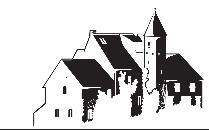
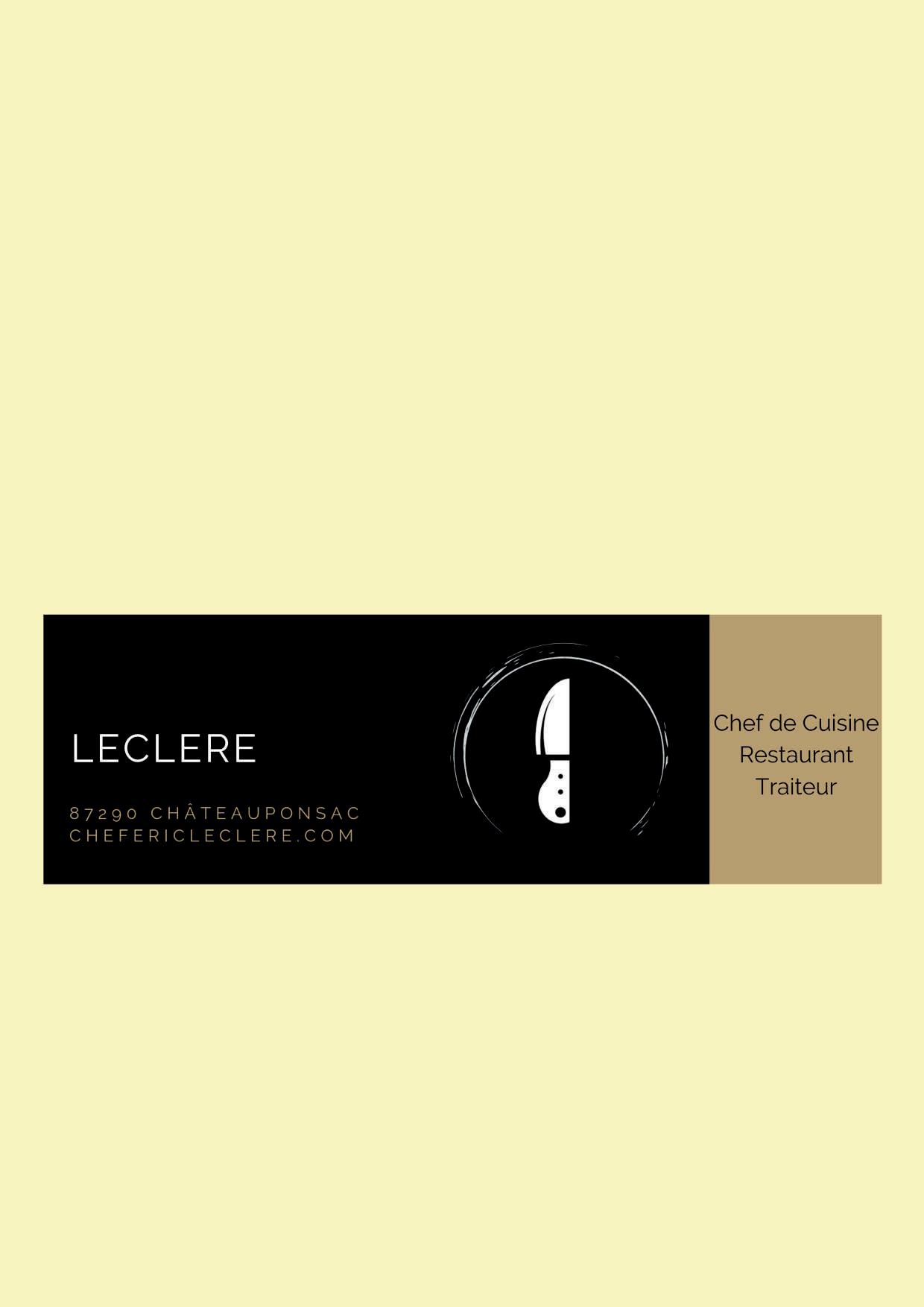
Open for private viewings Call 05 49 48 02 93
Open for private viewings Call 05 49 48 02 93
Château Mareuil, Mareuil, 86290 Brigueil-le-Chantre
Belinda and Lee Prince 05 49 48 02 93 www.chateaumareuil.com
We all need each other

Château Mareuil History, Beauty, Tradition Visit our medieval château Siret: 840796015 00013
Support Local Business
22 etcetera food
Definition of Services and Sales Impact on tax and TVA
For those businesses that are on the micro regime or microentrepreneur or are not TVA registered, they must be careful about the classification of their sales. If you have an activity where there is a combination of sales of goods and services, you need to be prudent as to how you declare these sales. In certain cases, the sale of goods can not be separated from the service and this should be declared for tax purposes all under services uniquely. This has consequences on the turnover thresholds before having to be registered for TVA.
TVA limits
You can operate a business activity in France without being TVA registered. There are limitations to levels of sales before you have to be TVA registered, please refer to the table below. You can have a combination of services and sales. However the total turnover can not exceed 91 900 euros or the part for services can not exceed 36 800 euros.
If you exceed the annual allowance, you are given a second chance, the opportunity of an exceptional overlap. However once you exceed that second threshold, you have to become TVA registered. You are only allowed to exceed the annual limit once every three years. If you exceed the basic limit the following year or thereafter, then you immediately become TVA registered.
Definition of Sales and Services
Where this becomes complicated is with the tax office’s definition of sales and services.
Some services involve the use of supplies and other parts.
Supplies are defined as materials or products that are indispensable in the realisation of the service. The use of the materials or parts is seen as a transformation or manipulation of the
products used. For example the materials used in the repair of a chair or the products used by a hairdresser.
Parts or spare parts are standardised objects that have defined roles and are fitted via a simple operation or installation and in the future could be removed without destroying the repaired object. For example the replacement of a car bumper, an engine, or even a wheel.
The fiscal services see the value of supplies as an integral part of the price of the service. Therefore the value of the material used to repair the armchair is seen as part of the service. This means that the value billed to clients for any supplies are declared within the category of artisanal or commercial services.
However where there are parts, these sales can be separated from the services when declaring to the tax office and categorised as sales of goods.
For example, a car mechanic operates a double activity of sales of goods and supplying a service. The tax services establish the distinction (BOI-TVA-BASE-10-20-40-20 § 40) between : - where the service is dominant (there are no supplies or the supplies are accessory to the completion of the service) the global price is seen as a service. – on the other hand, where the value of the parts is significant in comparison to the fitting, the operation is defined as a sale for the parts, accompanied by a service.
To complicate things further, the tax services consider that parts or supplies fall under the category of services where their global value of the goods used does not exceed 50 % of the total bill.
In the past, these notions have not been apparent to certain businesses, for example those in the building trade. Often the cost of materials is separated for
classification purposes to allow the business to stay under the TVA levels.
An example of a service that can be separated into both sale and service is the supply and fitting of a wood burner. The wood burner is an object that can be identified separately from the service. The wood burner could be removed and resold and the billed value of the wood burner represents a significant part of the bill. The artisan can deal the price of the burner as a sale of goods (ventes de marchandises) and the installation as a service (prestation de service).
An example of where the materials can not be separated from the service is the building of a patio. The slabs, the cement etc. are an integral part of the service. Therefore the total bill to the client should be categorised as a service.
An example of where the sale is seen entirely as a sale of goods is production of a bespoke table.
To summarise, where your activity is seen as a service using materials, all billings should be declared as services and you are limited to a turnover of 36 800 euros. Over this level of billings, you must be ready to go VAT registered. This also has an effect on how you declare to URSSAF and how your fiscal income is calculated, as 50% of the billings are seen as income. Be vigilant.
There isn’t a machine that flashes a red light to say that you have exceeded the TVA threshold, you must be vigilant. Once you know you have exceeded the limit, then you must contact the Services des Impôts des Entreprises, request your TVA number and choose the TVA declaration method that you prefer. You must declare TVA on your sales from the 1st of the month in which you exceeded the limit.
business SMALL BUSINESS ADVICE LINDSEY QUERIAUD OWNER: CAST T: 05 45 84 14 94 lindseyqueriaud@outlook.com
etcetera 23 Types of activity Sales for the year Exceptional limit Sales of goods 91 900 101 000 Tourist rentals 91 900 101 000 Commercial and Artisanal services 36 800 39 100 Other Services (BNC) 36 800 39 100
These notions have not been apparent to certain businesses, for example those in the building trade
All of you have received your avis d’imposition, and some of you are coming back to me with queries as to why you have to pay tax or social charges. Note that if some of you have done it properly (and some of you have as I have done it for you!!) and are still being taxed social charges, then you need to see the tax office directly.
Social charges:
The French government has changed the law regarding social charges. Before last year, the global rate for social charges in total was 17.2%. It was then composed of 5 different types of tax. One of them is called Prélèvement de solidarité and it was at a rate of 2%. This social charge is to help with French pensions so has nothing to do with the French health system.
Therefore, even if you are under an S1 and therefore should not pay social charges, you will have to pay the “Prélèvement de
Understanding Box 2OP and The S1 Boxes
Solidarité - Prel Sol. However, now the rate is 7.5% instead of the 2% it was last year! A good thing for French people as this tax is only applied to capital gain/interest/rental income and not on income from pension or salary, but bad news for people who are not affiliated to the French health system or are under the S1 system (meaning the UK reimburses the CPAM for your health expenses in France). Now the rates are: CSG at 9.2%, CRDS at 0.5% and Prel Sol at 7.5%. Some of you are therefore not charged CSG/CRDS but would have been charged 7.5% as per below on your income tax form bill called “avis d’imposition” - please refer the table below.
If you are under the S1 system and are paying CSG/CRDS, you can claim it back! To avoid being taxed CSG/CRDS you should have ticked boxes 8SH and 8SI on form 2042-C or online.
If you did not do it, you can claim it back by writing to the French tax office.
Here is an example letter below for omitting box 8SH and 8SI:
Even if you are under an S1 and therefore should not pay social charges, you will have to pay the “Prélèvement

Madame, Monsieur, Nous venons par la présente demander la rectification de notre impôt sur le revenu 2022 sur nos revenus de 2021.
En effet, nous avons fait une erreur lors de notre déclaration et tenons à vous présenter nos excuses. Nous sommes de nationalité Britannique et les formulaires sont dur à comprendre pour nous.

Nous avons omis de cocher les cases 8SH et 8SI du formulaire 2042C. En effet, nous dépendons du régime de santé Britannique grâce au formulaire S1. Nos numéros fiscaux sont (add your fiscal reference number and FIP number). Dans l’attente d’une réponse favorable de votre part, veuillez agréer Madame, Monsieur, nos salutations les plus sincères.

Cordialement
If you have done your tax online, you can go back to your declaration online to rectify it and tick the appropriate boxes.
Isabelle Want 06 17 30 39 11 Email: isabelle.want @bh-assurances.fr N° Orias 07021727/16005974 22 rue Jean Jaures. 16700 Ruffec Tél:+33 (0)5 45 31 01 61 10 Bd du 8 mai 1945 16110 La Rochefoucauld Tél:+33 (0)5 45 63 54 31 102 Avenue de la République 16260 Chasseneuil sur Bonnieure Tél:+33(0)5 45 39 51 47 2 Avenue de la Gare 16270 Roumazieres-Loubert Tél:+33(0)5 45 71 17 79 BH ASSURANCES ISABELLE WANT
24 etcetera business
Tax Information
PRELEVEMENTS SOCIAUX Détail des revenus CSG CRDS PREL SOL Revenus de capitaux mobiliers 570 570 570 Revenus professions non salaires 3783 3783 3783 Revenues non assujettis 4353 4353 BASE IMPOSABLE 0 0 4353 Taux de l’imposition 750% Montant de l’imposition 0 0 326 Total des prélèvements sociaux nets 326
de Solidarité
Showing 12.8% applied:
The Flat tax on interest and capital gain:

A few years ago our new President introduced the flat tax meaning our interest or capital gain could be either taxed at source at a rate of 30% (12.8% of income tax and 17.2% of social charges) or be added to our other income on our income tax form and be taxed accordingly (best if your income tax is lower than 12.8%). So, you could choose to be taxed at source at 12.8% income tax or add your gain to the rest of your income and be taxed at the appropriate rate (you choose by talking to your bank and insurance provider for investment and tell them what you prefer).
I have found out that for income outside of France (so, not taxable at source) the French government has automatically applied the rate at 12.8%! See the top box
above which shows what it looks like on your income tax form.
If your total income is below the threshold of roughly 15 000€ for singles or 28 000€ for couples, you are better off not being taxed at 12.8% as you probably would not have been taxed at all! Even if you are not above the threshold you are probably better off claiming back as well! To see if it is worth it, you need to look at last year’s “avis d’imposition” and check your average tax percentage called “taux d’imposition”.
Or this year’s form, where you have “taux pour le foyer”. What you should have done is tick box 2OP on the income tax form (page 3 on the 2042).
So, if this is the case for you, you simply need to write to your local tax office asking them to rectify it.
Here is an example letter below for box 2OP:
Madame, Monsieur, Nous venons par la présente demander la rectification de notre impôt sur le revenu 2022 sur nos revenus de 2021.
En effet, nous avons fait une erreur lors de notre déclaration et tenons à vous présenter nos excuses. Nous sommes de nationalité Britannique et les formulaires sont dur à comprendre pour nous.
Nous avons omis de cocher la case 2OP sur la page 3 du formulaire 2042. En effet, nous voulons opter pour l’imposition au barème pour l’ensemble de nos capitaux mobiliers.
Nos numéros fiscaux sont (add your fiscal reference number and FIP number).
Dans l’attente d’une réponse favorable de votre part, veuillez agréer Madame, Monsieur, nos salutations les plus sincères.
Cordialement
If you have done your tax online, you can go back to your declaration online to rectify it and tick the appropriate box.
Don’t hesitate to contact me for advice or for a quote on any insurance. Visit www.bh-assurances.fr/en for my previous articles on the “practical pages”.
business etcetera 25
12.8%
For income outide of France, the French government has automatically applied the rate at 12.8%
Preserving Your Wealth during Uncertain Times
HELEN BOOTH

Let’s face it, the last couple of years have had a significant impact on our investments. From COVID to political unrest to inflation highs to war. The economic volatility of global markets has made it very difficult to plan investment strategies. Do we cut and run or stay the storm?
It is easy to fall prey to panic but remember that investments are long-term and designed to ride out fluctuations in the markets.
Regular highs and lows are normal in the life of any market.
Keep in mind these fundamental principles that will help investments weather the storm.
Keep your portfolio diversified – The best way to mitigate risk is to keep your

portfolio diversified. This means investing in various sectors such as financials, energy, property, infrastructure, oil and gas technology, different geographic regions such as the US, Asia, Europe and emerging markets, or different asset classes such as equities, bonds and cash. These help you to carry your eggs in several baskets. If one market or sector plummets, then you still have other sectors or markets that perform.
This is a marathon, not a sprint – History has shown that despite there being ups and down in the markets, over the long term, good returns generally prevail. A long-term investment will ride out the storms in the markets.
Ensure your portfolio stays balanced – Your wealth consultant will regularly rebalance your portfolio to ensure your risk level remains as is (selling or buying stocks, bonds etc., to maintain your risk profile) and to eliminate any dead weight.
Take advantage of low markets – When markets drop, it is a good opportunity to

buy valuable stock at lower prices, which will be beneficial when the market has an upswing again. You get more shares for less. This is called unit cost averaging, buying stock regularly to build your stock portfolio so that when markets recover, your assets are worth more.
It is essential to remain calm during volatile markets and let the experts help diversify your investments to spread risk. Always consult with your wealth advisor when you feel panic over falling markets. Remember, the end goal is to build wealth over time. Don’t get distracted by the ups and downs.
Please note, the above is for educational purposes only and does not constitute advice. * No liability can be accepted for any actions taken or refrained from being taken, as a result of reading the above.
business
INDEPENDENT FINANCIAL ADVISER deVere France
26 etcetera
Despite there being ups and down in the markets, over the long term, good returns generally prevail
How Skilled Tradespeople Can Save and Organise their Work Photos

As a skilled tradesperson, you know how important it is to keep records of your work for reference, client portfolios, and future business opportunities. However, with so many photos taken daily, it can be challenging to keep them organised and easily accessible. This article will cover how skilled tradespeople can save and organise work photos.
Cloud Storage Services: One of the most popular and effective ways to store your work photos is by using cloud storage services like Google Drive, iCloud, iDrive, Dropbox, or Microsoft OneDrive. These services allow you to easily upload your photos and then share them with others.
Photo Management Software: Another option is to use photo management software, such as Adobe Lightroom, to manage your photos. This software allows you to organise, edit, and categorise your photos, making it easier to find the ones you need.
External Hard Drives: An external hard drive is a good option if you prefer to store
your photos locally. This way, you can keep all your photos in one place and access them when necessary.
Social Media: Social media platforms like Facebook, Instagram, and Pinterest are functional spaces to share your work photos. Just make sure to keep your profiles professional and relevant to your business.
Physical Albums: While digital storage options are convenient, physical albums can also be a great way to store your work photos. You can quickly flip through your albums to find the photos you need and even show them to clients during consultations.
Examples:



An electrician could store their work photos in Google Drive and categorise them by project type, such as "Residential Wiring" or "Commercial Electrical Upgrades".
A plumber could use Adobe Lightroom to edit and enhance their work photos before uploading them to their website or social media accounts. A carpenter could create a physical album of their work photos and use it as a portfolio when meeting with potential clients. Good organisation of work photos makes it easier to reference past projects and showcase expertise and reduce the risk of losing them.
In conclusion, having an efficient system for storing and organising your work photos is crucial for skilled tradespeople, you just need to find the best method for you and your business.

MICALA WILKINS ALACIM SOCIAL MEDIA MARKETING MARKETING business Let’s talk currency Sue Cook EI Regional Coordinator Centre Ouest 87600 Rochechouart +33 (0)555 036 669 +33 (0)689 992 889 E: sue.c@currenciesdirect.com www.currenciesdirect.com/france Siret: 444 729 008 00011 etcetera magazine ~ supporting businesses since 2006 Advertise Your Business From just 39€ ttc per month Contact Sam or Gayle 05 17 36 15 32 editors.etcetera@gmail.com etcetera 27 Create a physical album of their work photos and use it as a portfolio when meeting with potential clients
Looking After
WHEN IT COMES TO OUR SKIN, WE WANT TO LOOK OUR BEST!
Our skin is one of the ways we present our health to the world - if we suffer from hormonal imbalances, eat a poor diet, or are dehydrated, it shows on our faces!

There are so many expensive products out there on the market that promise clear skin but it’s true what they say, ‘true beauty shines from within’. Making good health choices will radiate out in your face and there is no product that can provide you with that kind of attractive glow. Acne is a tough condition that many people suffer from, but there are natural ways you can help yourself. Instead of reaching for the roaccutane or harsh chemical peels, try changing the
ingredients your body uses to make your skin - better quality ingredients = better quality skin.
Don’t forget to include skin brushing in your beauty regime. Exfoliating away the dead and dry skin cells will more quickly reveal the beautiful, clear skin that your body wants to make.
So here are my top tips for great skin! Make the changes in the following areas and you’ll start seeing a difference in a month or so!
Glowing skin tips for your daily routine
1. Drink 250ml of room temperature filtered water immediately upon
waking. This helps the body release toxins as soon as you wake. Not only that, but it also helps you wake up!
2. Have your supplements by your bed so that you don’t miss your daily nutrients.
3. Supplement curcumin (turmeric) for inflammation, chlorophyll for antioxidants - said to target acneand a broad-spectrum probiotic which populates the microbiome with good bacteria.
4. Morning stretching wakes up your body and gets blood and nutrients
28 etcetera
health
Your Skin

circulating around the whole body. Three sun salutations are a great start to the day.
5. Eat only whole, unprocessed fruits, vegetables, grass-fed and naturally raised meat and eggs, and avoid processed foods, cooked (not raw) dairy foods and non-organic foods.
6. Have stress management strategies in place. When you feel stressed, breathe in deeply to your maximum and then exhale very slowly; this has a calming effect on the parasympathetic nervous system which stops your digestive

system from shutting down and stops the production of stress hormones.

7. Do at least 30 minutes of light to moderate exercise every day.
8. Get to bed at the same time every day and regulate your sleep routine. Be off screens before you try to get to sleep. If you have trouble nodding off, read a book an hour or so before you want to sleep.
9. Include a little probiotic food with each meal - examples are Kimchi, Sauerkraut, Kombucha, Kefir and Pickles. It’s easy to make your own.
10.Brush your skin every day with a soft bristled brush. You can brush towards the heart from your feet and hands along all areas of your body; this helps the flow of lymph and the detoxification pathways. Allow the changes time to be integrated into your body. Your body will slowly adapt as it takes up to three months for your skin to completely renew. Keeping a diary of the changes you see over time will help you to stay motivated and at the end of your journey you will be able to see just how far you have come. Best of all, this regime doesn’t just benefit your skin, it benefits the whole of you!
Amanda is a registered Naturopathic Nutritionist and Nutrigenomics Practitioner. Gut, Digestion and Microbiome Specialist www.amandakingnd.com Email: amanda@amandakingnd.com
etcetera 29 health
Care at Home
6 years experience of live-in care in the UK ASSISTING YOU WITH



•Organising routines for medications
•Mobility issues

•Companionship
•Personal hygiene
•Washing/dressing
•Meal preparation
Naturopathic Nutritionist


Focusing
Sally cares...
Services offered in Depts 86 and 87

•Domestic duties Siret No. 81370045700019
Sally Bennigsen T: 06 14 66 59 62 E: sallycares@myyahoo.com

Dr Paula Martin EI Clinical Psychologist
Call
www.psychologist-seagrave.com Maison de Santé Place du Champ de Foire aux Moutons 86150 L'ISLE JOURDAIN Email: seagrave.psy@gmail.com
The British Psychological Society



Spa days / Spa Nights: hut tub, massage + lunch / supper + b&b. Gift vouchers available. Specialist in Hot Stones Massage, Indian Head, Reiki, Facelift Rejuvenation, Shiatsu


Amanda King BSc (OPEN) Dip. Nut. CNM www.amandakingnd.com 06 32 83 12 79 amanda@amandakingnd.com
HAIRDRESSER ANNETTE VAN ES


Chez Martin 16150 Pressignac
For an appt please contact: 05.45.71.56.02 06.50.23.61.37

annette.vanes@orange.fr
siret: 518 364 989 00013
Nikki
Photography
Knife-making workshops with Sean
MICHAEL WILLIAM PARK
30 etcetera
BY
19 Place Charles de Gaulle. 87210 Le Dorat T. 06 47 43 01 66
health
85160551900012
Hair designer with many years’ experience, including the Vidal Sassoon team. My salon is based in the heart of Le Dorat in the Limousin.
emmajhodgson@hotmail.co.uk 0656 872967 (Fr mob) 07870 667159 (UK mob) Mobile Service from 87440 Swedish Massage Sports Massage Reflexology Myofascial Release EFT siret:
well-beingtherapies
Nicholas SEAGRAVE M.B.P.s.S. Psychologue / Psychologist
Mob
to Face
Video
PSYCHOTHERAPY AND COUNSELLING SERVICE N° ADELI 86 93 03 86
: 07 77 26 10 63 Face
/
BRINGING HEART INTO YOUR HOME
on the root cause, not symptoms Fatigue • Poor sleep • Weight issues Hormonal Fluctuations • Menopause Fertility, Pregnancy and Breastfeeding Chronic illness • Diabetes • Cancer • Arthritis Sports nutrition • Thyroid support Depression or Anxiety • Chronic Pain www.underthelimetree.com email: nikki@underthelimetree.com Fontfaix le Haut 16260 Cellefrouin 05 45 84 91 79 / 06 47 24 34 61
Veggie/Vegan
&
Cooking classes
Siret 91503451600012
lunches
dinners ‘pop-up’
with
Digital
&
Therapy for problems including
Face-2-Face
www.psychology-helps.com drmartin@psychology-helps.com UK Trained French Accredited & Registered ADELI: 169305380 Siret: 892 651 050 00015
D.Clin.Psychol, Bsc (Hons)
anxiety, anger, addictions & compulsions
16150
Evergreens

EVERGREEN PLANTS ARE THOSE THAT RETAIN THEIR LEAVES ALL YEAR ROUND
Caroline has been a lecturer in horticulture for 20 years and now runs a nursery and ‘garden craft’ courses in the Haute-Vienne at Le jardin créatif

Or you could also say that they drop their leaves all year round rather than all at once like deciduous plants do in preparation for dormancy. Evergreens tend to originate from warm climates where they do not need to go fully dormant in order to cope with the harsh winter season, and they continue to photosynthesise and grow more or less continuously all year round.
planting scheme

contain up to 35 % evergreen plants to give year-round interest
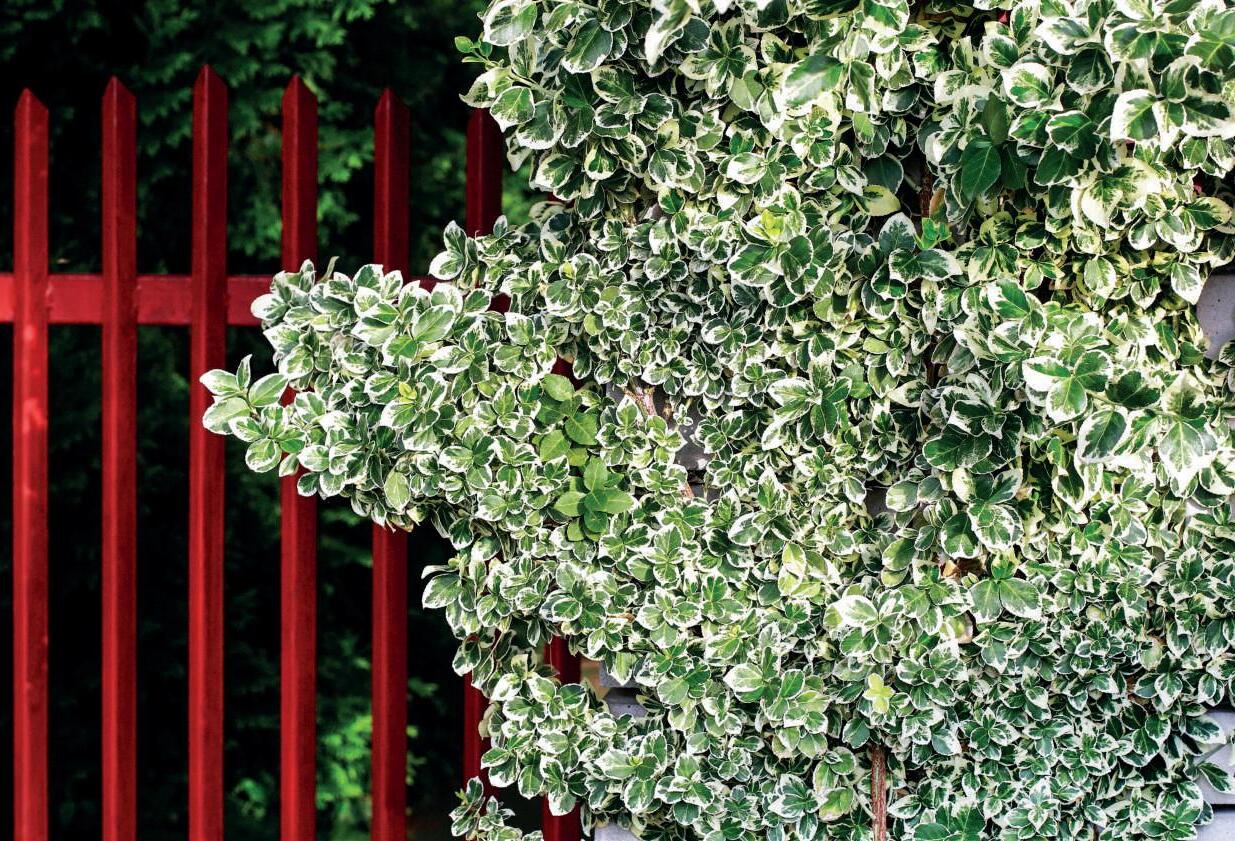
They remain ‘ever’ green because they have always got functioning foliage. Leaves are organs whose function is to support gas exchange for respiration, and photosynthesis through tiny pores on the underside of the leaf, and they also contain the specialist cells that carry out photosynthesis. These organs have a
limited life span and older leaves will eventually turn yellow and fall. The difference is that evergreens are constantly replenishing them and therefore never go fully dormant. It is fair to say that in winter, when light levels and temperatures are lower, this process slows down and the main leaf drop is at the start of the growing season when the first main flush of new leaves grows as the new shoots and branches develop.
A well-balanced planting scheme should contain up to 35 % evergreen plants to give year-round interest and support the more seasonal planting. Evergreen plants include broad leaved shrubs and trees,
climbers, conifers (although not all conifers are evergreen), and some herbaceous perennials, ornamental grasses, and bulbs.
Some evergreens are not fully hardy as they originate from warmer climates, but many will easily tolerate a more temperate climate. Here is a selection that we have found to suit the climate here and add year-round interest to the garden:
Euonymus fortunei cultivars: The genus Euonymus contains a varied range of deciduous and evergreen shrubs, but the cultivars originating from the species fortunei have an interesting and useful habit and are very versatile. Grown in a border they make rounded, moundforming shrubs that make good ground cover, but if you plant them against a wall or fence they will send out long stems that produce aerial roots and they will climb,
Caroline Wright Le jardin créatif
34 etcetera etcetera 31
A well-balanced
should
Euonymus fortunei


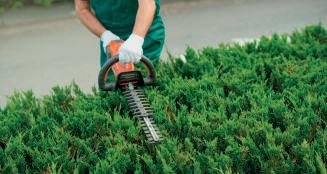




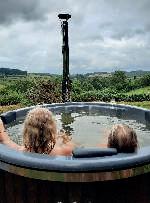








32 etcetera garden EI HOT TUBS in France Contact Nicola email: hottubsinfrance@gmail.com FR mobile 07 49 19 46 84 UK mobile (0044) 784 575 4049 www.hottubsinfrance.com Kick back and relax in your wood-fired hot tub Siret 879 912 855 0019 Hottubsinfrance Google business - https://hot-tubs-in-france.business.site ▪ Comfortable fibre glass seating up to 10 people ▪ Colourful LED lighting ▪ Soothing air or Hydro massage systems ▪ Insulated cover, drinks holder and step included Cotswold Eco Wood Fired Hot Tubs THE INVENTOR OF THE "SMART" POOL Manage your pool with your smart phone from home & away! POOLS AND SPAS CONSTRUCTION - RENOVATION WATERTREATMENT - POOL EQUIPMENT - FURNITURE DECORATION English etcetera magazine - Supporting local business since 2006




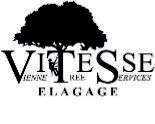











etcetera 33
ladies VAN Garden Waste � Barns Cleared Unoccupied holiday homes checked in the North Charente, Vienne and Deux-Sevres For enquiries or rates please contact us on: 0772 388 460 or 0963 681 249 Siret registered ~ Hedgecutting and paddock mowing ~ Flail mowing for rough/long grass areas ~ All excavations and groundworks undertaken ~ Woodchipper and operator for hire ~ All fencing carried out ~ Patio's, driveways and excavations siret51325382300019 ● Fully insured and registered ● Free quotes and advice ● From pruning to dismantles ● Overgrown hedges Call Darren Shepherd www.viennetreeservices.com 05 49 87 29 16 / 06 73 21 00 27 TREE SURGEON Siret 752 049 932 00011 Tim Shepherd ✓ garden care painting fencing ✓ ✓ cleaning caretaking maintenance ✓ ✓ ✓ key-holding admin help changeovers Tel : 05.49.87.02.96 shepherd.timothy@orange.fr Alan Schofield EI T. 06 31 58 30 93 Tel: Frank Hawkins 05 55 71 43 38 Email: sparksstudio@yahoo.com Facebook: Hawkins Gardening Services Siret: 514 758 028 00013 Areas covered 87 & 24 HAWKINS GARDENING SERVICES (EI) ~ Grass Cutting ~ Hedge Trimming - Fencing - Strimming - Garden Clearance All Aspects of Garden work undertaken 32 years’ experience Free estimates FENCING • Agricultural/Equestrian • Garden • Swimming Pool GATES • 5-Bar Field/Entrance • Garden • Driveway Neil: 05 55 00 08 90 / Mob: 06 11 71 66 87 garden DMS GARDENING & CLEANING SERVICES Regular Cleaning at Reduced Rates ~ Gite Management and Changeovers ~ Grass Cutting and Gardening Care ~ Security Checks ~ Very Reliable Contact Janine 06 42 14 26 56 or email janinedisney@aol.com Covering 16/24/86/87 Siret 82779105400014 Siret: 452 821 101 00030 David Cropper Stump Grinding Service I grind tree & hedge stumps away leaving no trace Less mess than a digger, quicker than burning and will not break the bank www.stumpgrindingcharente.org cropper.david@neuf.fr 05 17 34 14 37 / 06 02 30 66 69 Property and Garden Services All aspects of Gardening, Pool and Property Maintenance Reliable, Experienced, Husband & Wife Team Mobile: 07 55 70 76 93 Email: ajtulley2@gmail.com Siret 789 292 232 00012 & 794 607 994 00017 Civray and surrounding areas
Two
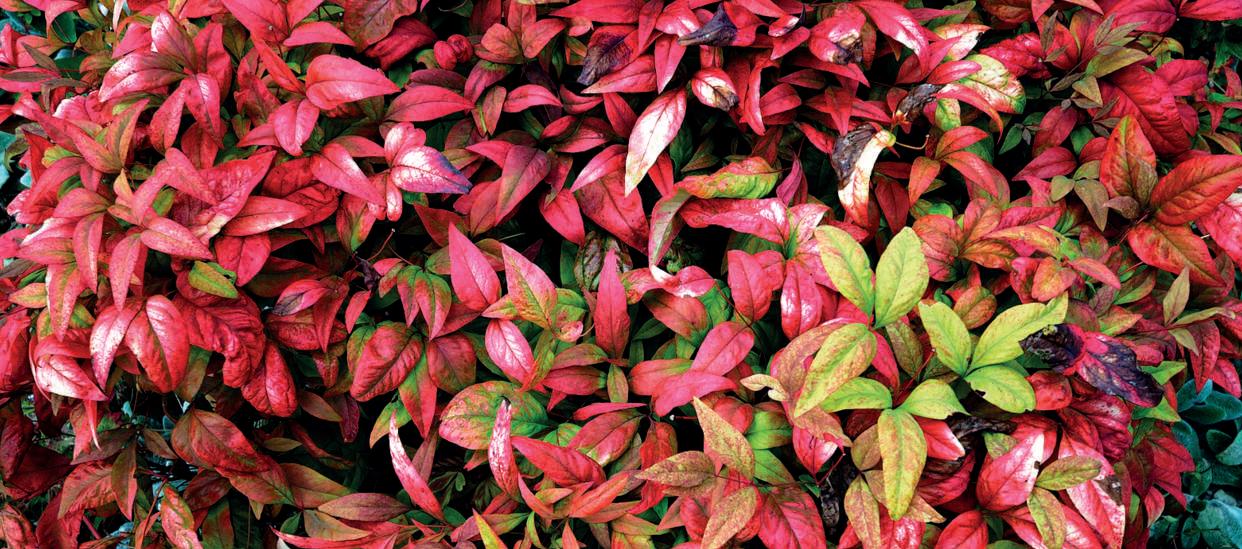
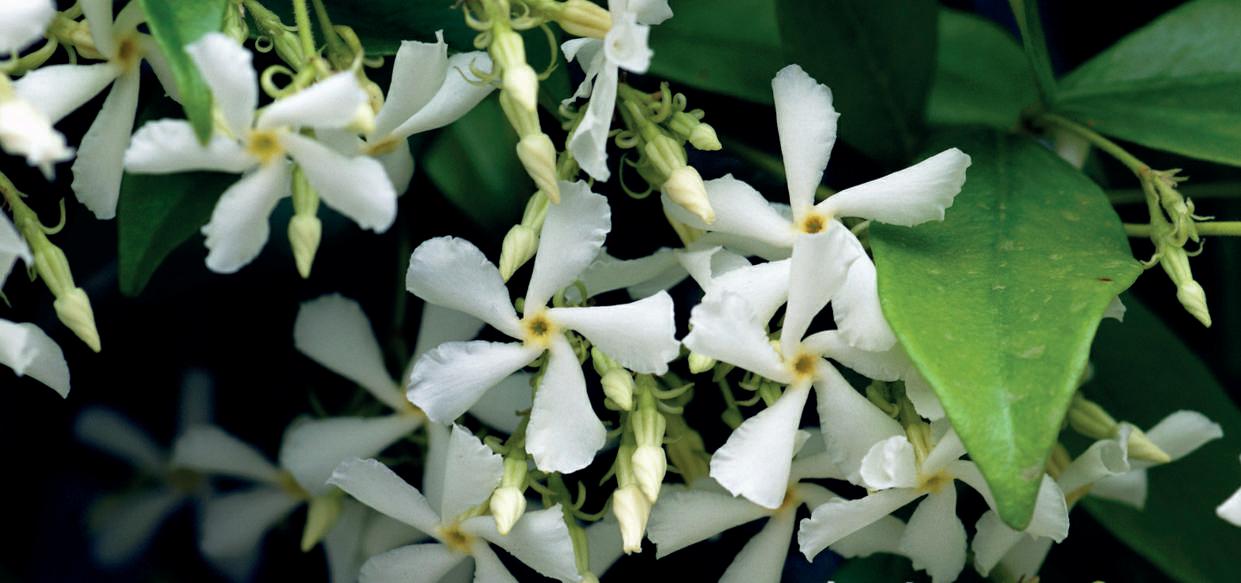
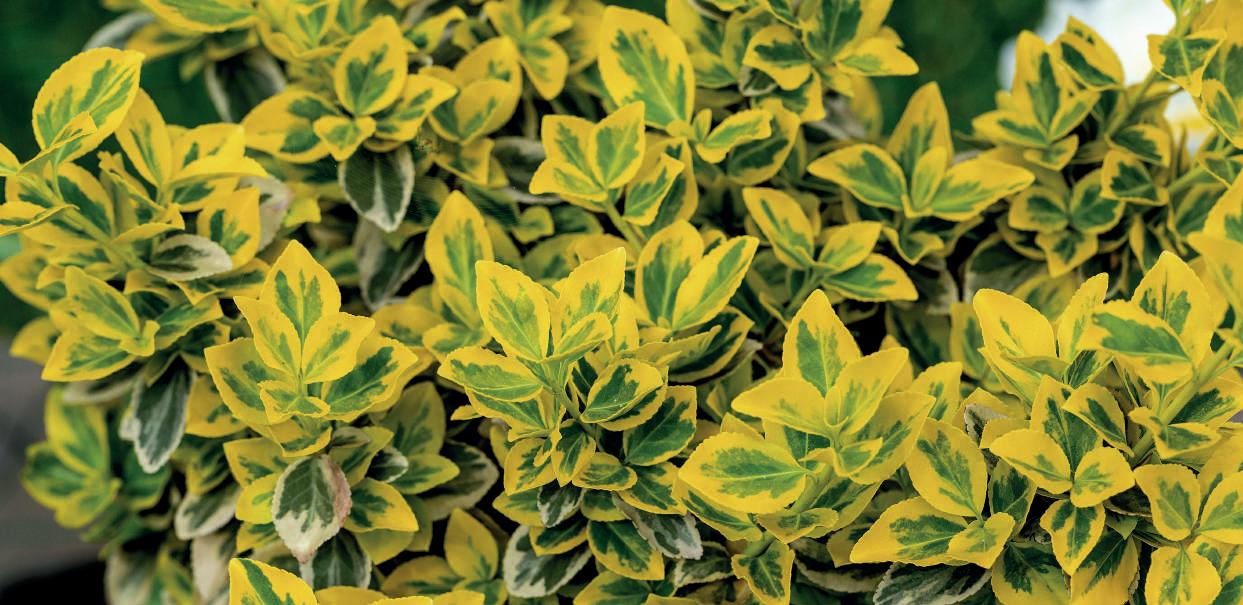 Nandina domestica 'Fire Power'
Trachelospermum jasminoides
Euonymus fortunei 'Emerald 'n' Gold'
Nandina domestica 'Fire Power'
Trachelospermum jasminoides
Euonymus fortunei 'Emerald 'n' Gold'
making a good evergreen cover for an unsightly wall or fence. They can also be trained as a low evergreen hedge, a good alternative to Box hedging that suffers from so many pests and diseases. They can be used for topiary and they make neat specimens for containers. Most cultivars are variegated, adding to their interest. ‘Silver Queen’ bearing rounded, glossy leaves with deep green and creamy white variegation, ‘Emerald Gaiety’ having a similar colour scheme but slightly smaller leaves, and ‘Emerald ‘n’ Gold’ with golden yellow and emerald-green.

Trachelospermum jasminoides, syn Rhyncospermum jasminoides (this plant has been given a new scientific name, but both are currently in use, syn standing for ‘synonymous with’) commonly known as the Star Jasmine or false Jasmine because many people mistake it for a true Jasmine due to the resemblance of the flowers both in colour and scent. It is a twining climber so it needs either wires or a trellis for support, and it is superb for a sunny wall where it benefits from the radiant heat, (although we have one growing vigorously on an east facing wall). The stunning scent from the flowers that are produced in early summer is wonderful, especially early in the morning and during the evening.
Sarcococca, there are several species, all of which produce highly scented flowers along the length of the stems but, this time in midwinter its common name of ‘Christmas Box’ refers to the fact that it is a compact evergreen but with larger, glossier pointed leaves than a true box, and it begins to produce its flowers around Christmas
They flower for a good few months, giving off a strong, sweet scent, particularly on sunny winter days, where they attract any bees that have emerged
time. They flower for a good few months, giving off a strong, sweet scent, particularly on sunny winter days, where they attract any bees that have emerged, giving them much needed nectar. You can cut the stems to bring indoors for a scented winter arrangement.
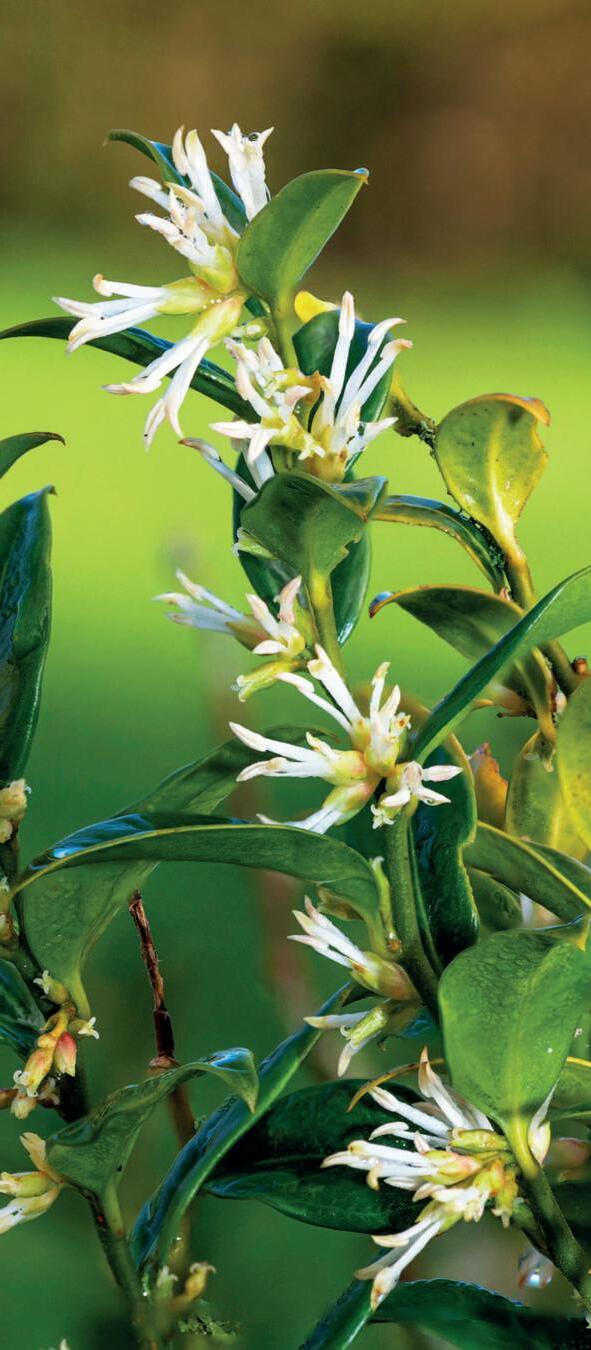
Viburnum tinus is a medium sized evergreen shrub with dark green glossy leaves and produces umbels of white flowers emerging from pink buds throughout winter. It can reach around 2.5 metres in height and spread over time. The cultivar Viburnum tinus ‘Eve Price’ is more compact and the flowers have more of a pink tinge to them. The flowers are followed by clusters of small, steely blue berries.

Nandina domestica ‘Fire Power’ whose common names include false bamboo and heavenly bamboo refers to the structure of the stems. It is not even slightly related to the true bamboos (it is related to Berberis) and is a small to medium sized evergreen shrub. The cultivar name ‘Fire Power’ refers to the bright red leaves at the growing points of the plant giving it a vibrant flame-flushed appearance. It grows well in most soil types and can tolerate light shade, but the red leaf colour develops best in full sun. Once mature, they will produce panicles of white, starry flowers followed by bright red berries that persist throughout winter.

Our nursery and garden are open on Saturdays 10am – 4pm from early March until the end of October. We have a range of decorative evergreen and deciduous shrubs, herbaceous perennials, ornamental grasses, herbs and aromatics.
www.lejardincreatif.net

etcetera 35
Viburnum tinus flowers and berries
Sarcococca
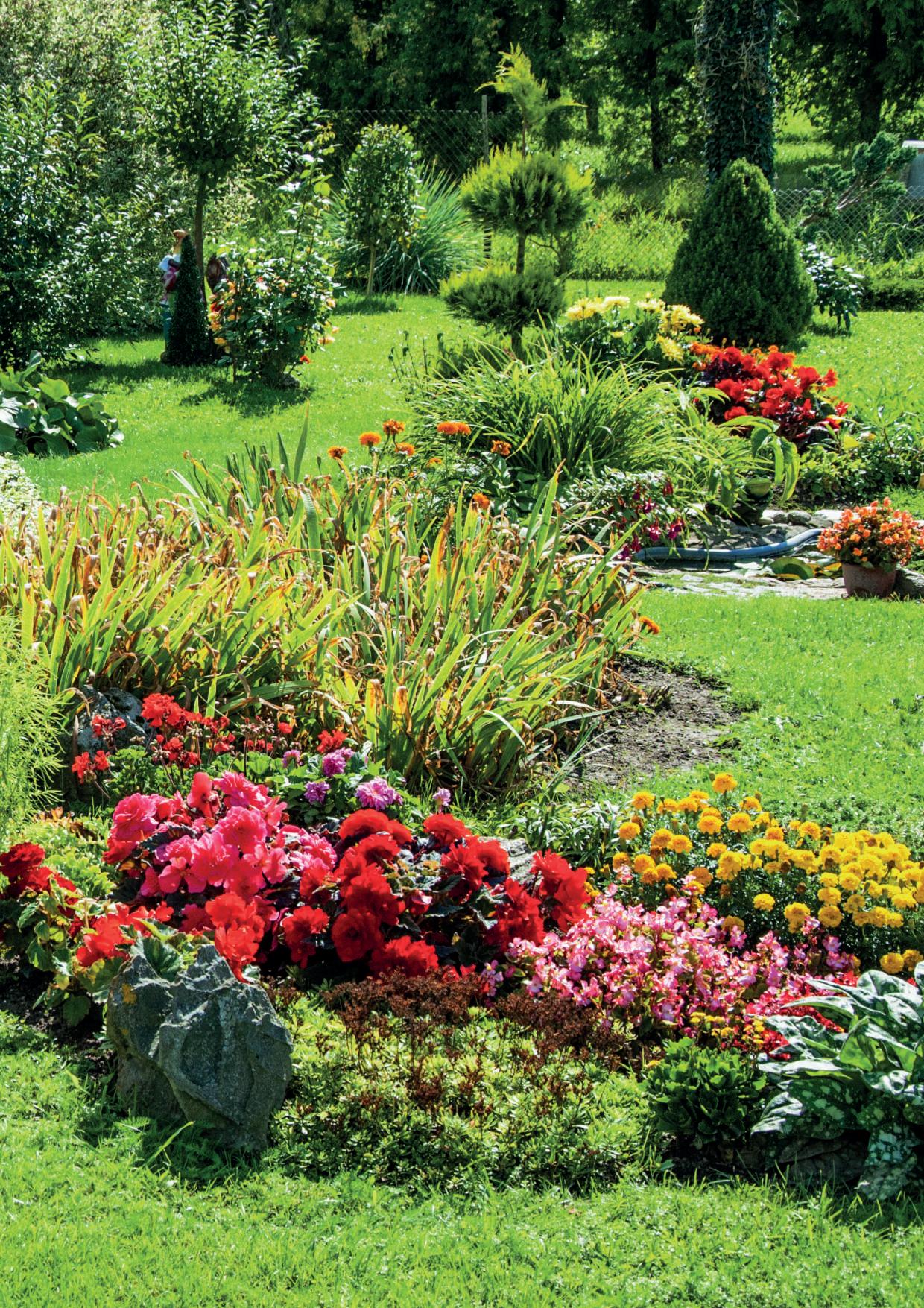
Springtime in the garden
THIS IS THE TRUE START OF THE GROWING SEASON AND UNTIL ENGLAND ADOPTED THE GREGORIAN CALENDAR IN 1752, THE 25TH OF MARCH, THE FEAST OF THE ANNUNCIATION, WAS THE START OF THE YEAR
Most gardens are a mix of old and new, where plants that have grown in situ for many years mingle with newer occupants. Even a blank canvas of a garden, once planted, will quickly mature and fill out, sometimes developing in unexpected ways. Gardens can lose their sparkle if plantings become overgrown and unkempt. This is the time to revitalise a tired, or even exhausted, plot. So, take the time to cast an appraising eye round your garden, review what is and what isn’t working..
Renew borders

The quickest way to make a garden look neater is to tidy border edges – this could be straightening a lawn edge or snipping back plants that are creeping onto paving. Herbaceous perennials can become overcrowded after three or four years. The border can be easily rejuvenated by lifting, dividing and replanting, and put in plant supports now. Old bulbs can become blind over time and these are best removed and the ones that are left can be helped back to strength with bulb fertiliser. Allow daffodil leaves to die back naturally - I know they look untidy, but they will provide food for next spring’s flowers.
Revitalise trees
to bring them back under control. This pruning will stimulate newer growth - it may seem drastic, but it will pay dividends. For some deciduous shrubs such as Hamamelis, some Magnolia and Acer palmatum it’s better to carry out heavy pruning over two or three years allowing you to see how the shrub responds, and then over time aim towards a more natural shape. For other deciduous shrubs such as Cotinus, Leycesteria and Philadelphus, these can be pruned hard, but it will take a couple of years for them to regain their former glory. An alternative is to stagger pruning, then cut the stems close to the ground over a two to three year period. For the following couple of years thin out excess shoots, selecting the strongest, best placed ones to remain.
By Ronnie Ogier
Ronnie is a passionate gardener and now loves sharing her years of experience of success and failures in her own garden and sharing it with you. Also a keen runner, having been bitten by the ‘Couch to 5K’ bug!

Since we started in 2013, we have donated over 68 000€
Lifting the crown of older trees by removing a few of the lower branches gives them a new lease of life. This process will allow more light to reach the soil beneath for, perhaps, planting, mulching or even a seat in the tree’s shade. Overcrowded branches will block out light from the whole area; thinning out about 30% of the branches will revive the tree’s appearance and let more sunlight through. The best time to do this work is between autumn and late spring.
Bring hedges under control
Out-of-hand deciduous hedges respond well to hard pruning. Cut them back as needed when dormant. If the reduction in width or height is more than 50%, stagger it over three years. Coniferous hedges, except for yew, do not regrow from bare wood but their height can be reduced by up to a third and sides can be controlled by cutting selected ones right back to the trunk and leaving others in place.
Renovate shrubs
Many overgrown shrubs can be pruned hard
Pruning disrupts the normal balance of hormones within the wood of a tree or shrub, causing a different type of growth. Buds at the top of a branch, apical or terminal buds, send a hormone, auxin, down the branch to inhibit side growth lower down. Removing this top bud stops the flow of auxins, and an alternative hormone, cytokynins, becomes dominant. This stimulates dormant buds to produce side shoots and branches. This is how we are able to change the shape of trees and shrubs.
It is a good idea to check all supports for climbers before they start to put on too much growth. This might be wires and strainers attached to a wall or a fence, or tripods made from pea sticks. Replace any that are not strong and retie the remainders. March is also the time to sow many seeds and get the whole propagation process going. Hardy and tender vegetables, herbs, tender flowering annuals and herbaceous perennials can be sown if you have the space and protection for them.
There is clearly a great deal to get on with in March, but there is still time to plan for your own enjoyment and relaxation. One of the ways I do this is by visiting other gardens. When I go and visit gardens I will almost always see something that interests or inspires me – it can be something quite small, a border plant or a different vegetable or it could be a ‘serious’ structural feature. Three years ago I saw a beautiful rose walk,
an archway covered with climbing roses. At that time, we were wondering what to do with the piece of unproductive land which has become our detached garden. The rose arch inspired us to do something similar and we now have a metal arched pathway, named by one of our friends ‘Ironhenge’, forming a gently curved path which over time (and unfortunately it does take time) will be smothered in roses.
One way to visit a wide range of gardens, both close to you and when travelling throughout France, is to become involved in Open Gardens/Jardins Ouverts. This is a French charity roughly based on the National Garden Scheme (the Yellow Book Scheme) in the UK. The Charity was founded in 2013 when four gardeners in the Creuse decided to open their garden for a weekend. The money they raised, 300€, was donated to a French Charity, À Chacun son Everest, which supports children and young people in remission or recovery from leukaemia. The scheme gradually grew over the following years, with more gardens joining so that we now have gardens opening in 30 departments in France. At the same time the number of charities supported increased. A Chacun son Everest is our main beneficiary and, since we started in 2013, we have donated over 68 000€ and it will continue to be our charity of choice for the foreseeable future. We first started supporting Quelque chose en plus in 2015 and have made regular donations every year since then, in total we have donated 10 500€ to this very worthwhile cause.
Anyone can get involved with Open Gardens/Jardins Ouverts, how much depends on you. You can open your garden and we will help as much as we can to get you started; you can become a member; you can become a ‘friend’; visit participating gardens; receive our newsletter to find out what we’re doing; or hold a fund-raising event for us. We aim to give 80% of the money raised by gardens to the charities we support. For all details on gardens or how you can donate or participate, please visit www.opengardens.eu

garden etcetera 37









free time 38 etcetera
etcetera 39 free time
The Night Sky
A BEAUTIFUL SPRING MONTH OF ENJOYING THE MARCH SKIES LIES AHEAD
We have many celestial treats to look forward to including a close encounter between the very bright planets Jupiter and Venus, a daytime view of a thin crescent Moon near Venus, and a chance to spot a comet with binoculars. This will be a great month to explore some of the most prominent spring constellations of Capella, Gemini, and Leo, and of course, the Spring equinox marks a change in the clocks and a shortening of the nights… which is sad for astronomers! Read on to find out more details of how, where and when to observe these and other spring events. For more details about the positions and formations of the constellations mentioned above you can use free phone apps such as Stellarium or SkySafari.
Moon Phases and observing tips:
Full Moon - 7th around midday
Last Quarter Moon - 15th just after 3am
New Moon - 21st 6.30pm.
Whether you are looking with only your eyes, binoculars, or a telescope, you can begin to explore many different features on the surface of the Moon. Try to avoid observing during the 'Full Moon' phase as the bright rays of the Sun will tend to drown out details. The weeks on either side of the Full Moon will provide you with the opportunity to look for seas, impact craters, and ray craters. The rays which are easiest to spot with the naked eye emanate from the craters of Tycho and Copernicus. You can find some of the features in the labelled image on the right. If you are observing with a telescope, remember that your view will be inverted due to the mirrors in the telescope.
Planet activity this month
Mercury - this planet will be best viewed towards the end of the month and can be found close to Jupiter from the 26th to the 28th. Be sure to wait until the Sun is below the horizon as these two planets will be setting soon afterwards. Jupiter will be shining much brighter than Mercury, but
the longer you look the more likely you are to spot this relatively tiny world.
Venus - our evening star at present, will be very close to Jupiter in the first week of the month. Look towards the west after sunset on the 2nd when the two planets will be at their closest. Venus shines at a visual magnitude of -4.0 while Jupiter appears brighter at -2.1. On the 24th, during the morning, it may be possible to observe a thin crescent Moon close to Venus. You will need a decent pair of binoculars for this. Take care to avoid looking at the Sun as it will be close by.
Mars - which will be fading in brightness this month - can be found looking south and seemingly moving closer to the constellation of Gemini throughout March. On the 28th it will be seen close to an almost first quarter Moon.
Jupiter - our other bright evening planet at the moment, may be spotted very close to a thin crescent Moon on the 22nd. With binoculars or a telescope it is well worth trying to spot the four brightest Galilean moons as they orbit the planet each night. Saturn, Neptune, and Uranus are poorly positioned or too close to the Sun at the moment to observe easily. Pluto!? Well if I mention Pluto you will know which generation I come from… poor Pluto!... no longer a planet.
The Spring Equinox
ByClaire Wardlaw
Claire Wardlaw, originally from Edinburgh, lives in the Charente with her husband. Since their move nearly 6 years ago, Claire has become passionate about astronomy

March it could still be spotted using binoculars or a small telescope, once you know where to look. This Comet was at its brightest in January and is now fading slightly and it appears lower in the skies through the rest of this month. February saw it journey past the constellation of Auriga, sitting fairly close to the star Capella. It then passed by the planet Mars mid-month. For March, it will be found to the lower right hand side of the constellation of Orion and by the very end of the month it could be visible, with binoculars, close to the star of Rigel. This comet was discovered by the Zwicky Transient Facility in March 2022. It is described as a 'long period' comet and may not return to Earth's orbit for another 50,000 years.
Meteor shower: The Virginids
Our evening star at present, will be very close to Jupiter in the first week of the month
The Virginids, as the name hints, will seem to emanate (or radiate) from the constellation of Virgo. Facing south this month, Virgo will be rising in the east and following the distinctive 'Lion' across the sky. While this shower has its peak of activity in April, it will be possible to look for meteors from the 10th of March onwards. A maximum rate of 5 meteors per hour can be expected but this will depend of course on how high above the horizon the 'radiant' is. It is best to look, not directly at the radiant, but 30-40 degrees to the side. These are slow meteors with long trails. The best time to catch a falling star will be when the Moon is 'New' or in a crescent phase.
This will occur on the 20th of March. At that time the day and night will be of almost equal length. Spring is officially returning which sees the nighttime hours reduce at their most rapid rate. This is also the time when 'Daylight Saving Time' begins. The clocks will therefore go forward by one hour on the 26th at 2am so sunrise and sunset will be about one hour later than the previous day.
Spot a Comet: C/2022 E3 ZTF

You may have heard the news of this Comet over the last month or two. In
The Merry Dancers
Any 'Scots' will know that the name of 'The Merry Dancers' refers to The Northern Lights or Aurora Borealis. Being spring, the solar wind is blowing more strongly at this time in the year and as the stream of particles reaches us here on Earth we will see some of them in the North (the ones which are not deflected by our magnetic field) glowing as they collide with gas in our atmosphere. In some instances the glow can reach as far south as Europe. Happy stargazing and clear skies!
40 etcetera
astronomy


etcetera 41 astronomy
Ouverture Truite
OCCASIONALLY I RECEIVE MESSAGES FROM READERS, WHICH DEMONSTRATES THAT AT LEAST SOMEONE IS READING MY ARTICLES!
One of the most common questions that I am asked is where to go to fish for trout. Like shooting, trout fishing is very different out here from what we are used to in the UK. The large municipal-owned reservoirs are not stocked with trout so there are no comparable places to Grafham, Rutland, and other put and take reservoirs. Trout fishing on rivers in this region suffers from the same problem that coarse anglers discover in that trees bordering the river affect where you can fish. Other than the Touvre I cannot think of a local river where you can cast a fly without the risk of snagging trees. I have had some success by wading the smaller rivers fishing directly upstream on a short line, roll casting. But to get the open spaces where a back cast can be made involves travelling to somewhere more suitable. The Dordogne around Beaulieusur-Dordogne or in the Rocamadour area would be my suggestion. But not yet. Wait until the water has warmed up as the Dordogne, like many other trout rivers, is fed by mountain streams and runs very cold at this time of year.
For the first two months I would head for the Touvre. You may not have the place to yourself as it is a very popular location. It does, however, offer superb fishing and is not as affected by flood water as the local freestone rivers are. Otherwise seek out the quieter small rivers such as the Brame, Gartempe and Tardoire where you might want to pack a worm rod as well as a fly rod to give you more opportunities.
There are other fish that will take a fly and can offer great sport. Dace are widespread in the Vienne system and can be seen taking surface flies from open stretches where fly-casting is possible. Chub are also partial to flies and in Sth. Yorkshire, a favourite tactic of mine was to fish a small nymph a few inches under a bushy dry fly such as an Elk Hair Caddis, New Zealand style. Casting upstream alongside willow or alder bushes will often fool the wary chub. There is a group of French anglers fly-fishing the Dronne that takes some impressive barbel on their fly rods. Flies are usually of a sedge nymph and fished upstream in smooth water of 60cm or more deep. Come summer black bass can be added to the list of quarry that fly anglers can target. They are far more widespread than many imagine and will
readily take a slowly tweaked floating lure especially close to snags and weed beds. Even pike can be lured on fly tackle. Back in the UK I used a #11 salmon rod and large flies nicknamed ‘Budgies’ to catch pike. The effort was rarely worth the results though as most fly caught pike were less than 5lb and it took some effort to launch those budgies into likely places.
Watercraft
As this month goes on we should see a rise in water temperatures brought about largely by increased sunshine. Surface water heats up more quickly and shallow areas will become attractive to browsing fish like carp. They will move into shallow water as the sunlight warms it and stay there until the sun goes down or the warming is negated by cloud cover or a cold wind.
In rivers, weirs and barrages create separate pounds that can restrict the movement of fish up and down river. These pounds are similar to the topography of the dammed lakes but also have the aspect of flow to consider. Mostly the river runs fast and shallow after a weir and the depth gradually increases the further away from the weir that it goes. As the depth increases the flow slows until at the dam or barrage the water can be almost stationary other than the surface layer if it spills over the top of the weir, or the channel where water is directed through a sluice or mill race. It is said that barbel favour water that flows at walking pace over a hard sand or gravel bottom, and that also follows for dace and roach too. Somewhere along the length of river between the weir upstream and the barrage or dam downstream there may be a place where the flow suits those species and if that speed of flow is over a hard bed of a depth of a metre or more your luck may be in. Dace show on the surface taking hatching insects and if barbel are feeding on drifting insects or rooting around the gravel they can give their location away as light reflects off their flanks showing a brief golden flash. Roach also flash, in their case silver as they twist
By Clive Kenyon
to pull caddis and snails from stones and weed.
Down at the dam end of a stretch of river you may see carp bubbling as they sift through the layer of detritus that has been laid there by the winter floods. I also find a lot of carp on shelves between the bank and the deepest part or where there are significant changes in depth and / or where flow is restricted but close to the full flow, which is called a seam. Gutter swims where food being carried down the river gets blocked by weed beds or where other obstructions collect are also good bets. You read about anglers fishing the far bank and around islands for carp and I am sure that they are good locations. But I am pretty sure that carp do not know what an island is, or whether the bank is far or near. So I prefer, wherever possible, to fish the near bank where good presentation of the bait is easier to achieve.
Dace are widespread in the Vienne system and can be seen taking surface flies from open stretches where flycasting is possible
Bream can also be found in the slower stretches of river, and in lakes prefer mud rather than gravel bottoms. Sometimes you will find areas of soft mud on the edge of the main current where floodwater has deposited it. They also lurk about at the tail of weirs and some of the largest bream can be found there. In lakes they show themselves by porpoising or rolling as the shoal travels along its regular route. Bream don’t get much of a mention here but this is a good time to fish for this popular species. In the Massignac arm of Lac du Mas Chaban, towards the end of and just beyond the Carpe de Nuit area is a good place to fish for them as is between the embarcadère and dam in the main basin. I have found bream in the River Charente in the Charroux to Savigné area and downstream to Cognac.
March and April can be a funny time for coarse fishing as the perch and roach will largely have finished their spawning, whilst bream, chub, carp, and barbel will not be ready for another month or two. If you do come across spawning fish of any species it is advisable to leave them be and look to catch other species elsewhere.

angling
42 etcetera
Doggy & Moggy Holidays & Hydrotherapy Centre


Thiat 87320 (10 mins north Le Dorat)
We do doggy play days E: doggymoggyholidays@yahoo.com www.doggymoggyholidays.fr

We can care for your pet, aiming for your dogs and cats stay to be as enjoyable and stress-free as possible. From one day to several weeks



Caroline Davis EI 30 mins from Limoges airport


owners, cats have staff"
Rochechouart Individual/family units with outside areas

in cat care awarded, Veterinary approved Inspection welcome (by apt) English & French spoken






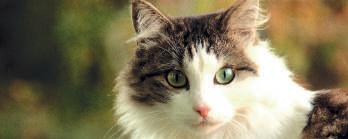


Run by Barbara, who loves cats Tel: 06 30 02 35 73 / 05 55 03 76 87
Email: bdowning77@wanadoo.fr www.rochechouartcattery.com

etcetera 43 animal LIME TREE KENNELS Siret: 822 175 527 0016 ● Purpose-built kennels ● Large secure paddock ● Large family kennels available Anita Frayling. Le Baillat, 16220 Rouzede Tel: 05 45 66 14 62 Email: anita.limetreekennels@gmail.com 15 mins La Rochefoucauld 20 mins Rochechouart New email address Chateau des Chiens (EI) Contact Chris T. 06 74 80 47 25 Email: chateaudeschiens@yahoo.com 79190 Limalonges Fully equipped, heated salon providing a safe, comfortable environment for your dog All dog types, sizes & temperaments catered for by a fully insured, experienced groomer siret 83786431300015 Private pens, each with inside and outside space. Peaceful garden setting. Open 7 days a week. Viewings welcome by appointment. Recommendations available. Situated in Montemboeuf (16) Alison Sacco Tel: 07 52 94 37 48 E: alison@petitepaws.fr www.petitepaws.fr Petite Paws Cattery Certificates in cat care Siret: 87789319800011 CLAUDE'S CAT HOTEL Les Chaillauds 16220 MONTBRON Tel: 05 45 24 01 45 claudescathotel@gmail.com www.claudescathotel.com "Cats don't have
Certificate
ULLYAIR CONCATTERY
Josie
Schuster-Lammas
HAPPY STAYS FOR DOGS AND CATS F
T:
or Sean
(EI) 05 55 60 27 79
Pine processionary moth (Thaumetopoea pityocampa) caterpillars in processionary mode

A

fly


trying to look like a bumble-bee - note only one pair of wings


 bee
(Bombylius sp)
A female red admiral (Vanessa atalanta) feeding
A female peacock butterfly (Aglais io) sunning itself on a painted wood board
A beautiful sea of English Sweet Violets (Viola odorata)
The shy flower-head of the Cowslip (Primula veris)
A female Brimstone butterfly (Gonepteryx rhamni) feeding
bee
(Bombylius sp)
A female red admiral (Vanessa atalanta) feeding
A female peacock butterfly (Aglais io) sunning itself on a painted wood board
A beautiful sea of English Sweet Violets (Viola odorata)
The shy flower-head of the Cowslip (Primula veris)
A female Brimstone butterfly (Gonepteryx rhamni) feeding
Nature in March
At its beginning, the trees are still bare, and frost is still a distinct possibility –we can have a frost even up to mid-April, and then, woe betide the fruit-crops! Occasionally, though, it is quite possible to take a lunchtime drink in a sheltered spot in the garden.
In a warm year, you may possibly have seen some insect life already. Groups of the dogged little gendarme bugs are often to be seen basking in a patch of sun (see next page for the full article!). Warm days can bring out hibernating butterflies, such as the red admiral, peacock, and even small tortoiseshell. They usually manage to rehibernate if the weather turns cold; switching between activity and hibernation for an insect is a far less energydraining process than it is for a mammal. Later, the first of the spring butterflies will start to appear – brimstone butterflies, some large and small whites, even orange-tips and large tortoiseshells if the warmth is very early, though April is the likelier month for them.

If the weather is warm, you may see honey bees going about their business. Over the winter the bees have been tightly massed in their nest, busy keeping the temperature up by metabolism and activity. They gain the energy needed by consuming stored honey, and can get
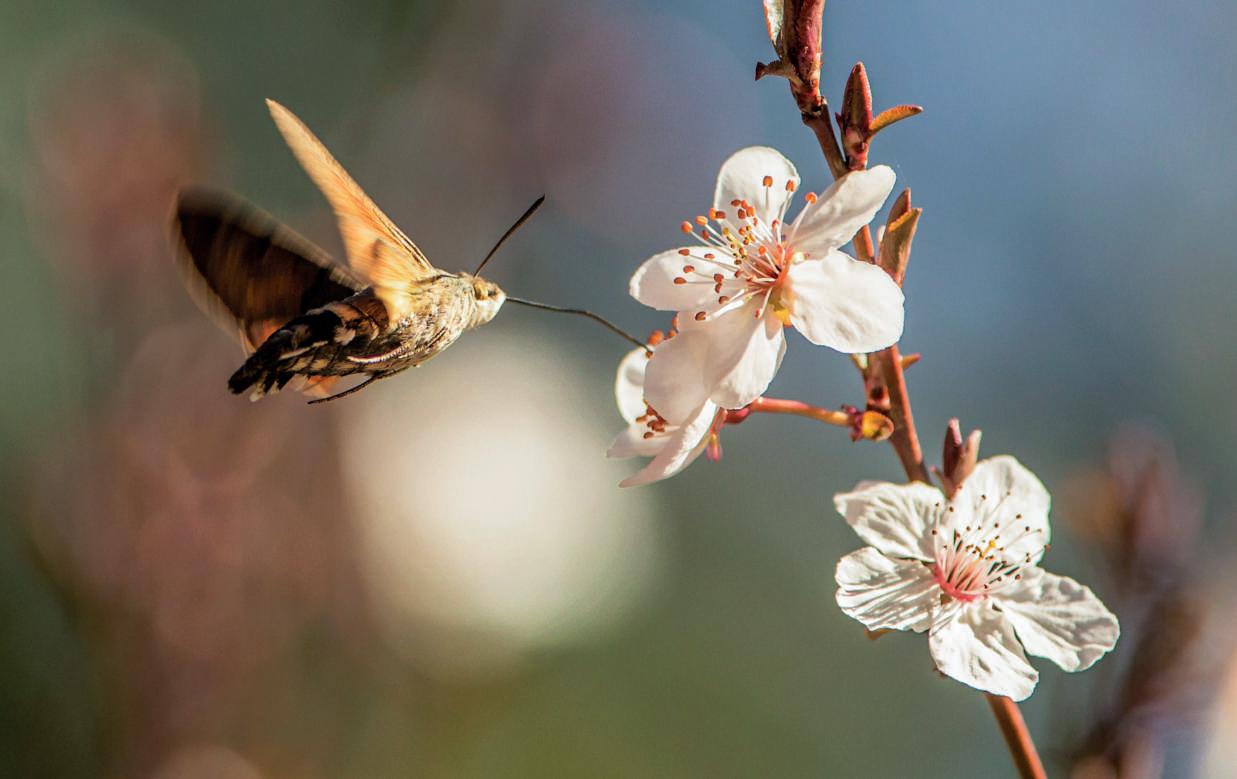
through up to 50 kilograms of it, depending on the size of the colony and the length and severity of the winter. They will soon be getting the nest ready for the new queens, and for the start of the really active season. However, no self-respecting honey bee will fly if the temperature is below 10°C. So don’t expect swarming until towards the end of April.
Another thing to watch out for is the bee fly. These tiny creatures, about the size of a pea, furry and light brown in colour, love to hover in front of early flowers and drink the nectar. They look very like tiny bumble bees, but close inspection will reveal that they only have one pair of wings and are true flies – all bees have two pairs of wings. Also they have a long proboscis to push into the flowers, unlike the bumble bee with its short mouth-parts. These curious little creatures actually prey on bumble bee colonies, laying their eggs in the nests of the hapless bees.
Hummingbird hawk-moths may put in an appearance on warm days later in the month, flying strongly, often close to the walls of your house. Again, they do no harm to the house – they are just enjoying the warmth radiated from the stonework.
ByMikeGeorge

Mike George is our regular contributor on wildlife and the countryside in France. He is a geologist and naturalist, living in the Jurassic area of the Charente

At this point I must repeat my annual warning about the pine processionary moth caterpillars. If you see a line of about 20 to 30 caterpillars walking nose-to-tail in “follow-my-leader” style, DO NOT TOUCH THEM! These caterpillars (Thaumetopoea pityocampa) are covered in irritating hairs, which will cause at best a nettle-rash in humans, at worst a serious allergic reaction in susceptible people. They can even be fatal to cats and dogs if they sniff them or try to eat them.
Violets will begin to appear in fields and on road verges. See if you can spot white specimens – they are about. Cowslips also start to carpet the roadsides. They love the limey soil of this region.
Towards the end of the month the familiar green haze of spring begins to appear in the trees. Soon the true spring will begin, and nature will re-awaken.

nature
MARCH NEVER SEEMS ABLE TO MAKE UP ITS MIND WHERE IT SITS IN THE PROGRESSION OF THE SEASONS
No self-respecting honey bee will fly if the temperature is below 10°C
A Hummingbird Hawk Moth (Macroglossum stellatarum) feeding on nectar from plum-blossom
etcetera 45
Gendarme bugs (Pyrrhocoris apterus) clustering - a protective action. Adults bear two black spots in red circles on their backs; redbacked individuals are immature instars
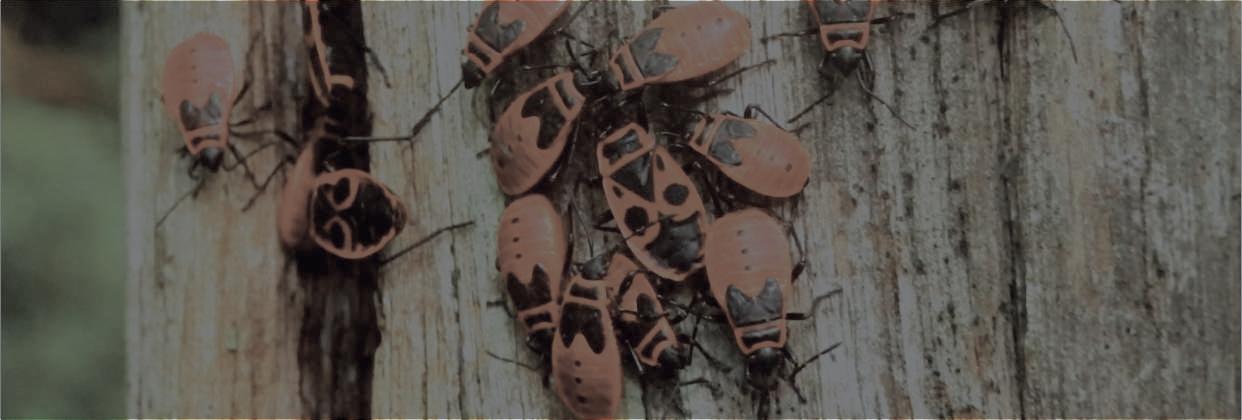

If You Want to Know the Time, Ask a Policeman

It seems to be with us throughout the year. On a sunny day, hordes of them will suddenly occupy any warm spot, and at the appropriate time of the year they clearly enjoy a rather busy and satisfying love-life.
So, what sort of insect is it?
The first thing you realise, as a newcomer to France, is that this creature isn’t quite like anything you have ever seen before. It doesn’t look exactly like a beetle, but then it doesn’t look much like anything else. It seems able to survive conditions that would spell death to any normal insect. It also seems to wander about with a blithe lack of concern for lurking predators. The creature is in fact not a beetle, but a true bug. The true bugs are so called to indicate that the subject under discussion is not “bugs”, which even entomologists acknowledge as an unscientific term for any winged creepy-crawly (as in “Bughunter”), but a class of non-dipterous insects (i.e. not flies) with mouth-parts adapted for piercing and sucking. Usually, this means a pest both of gardens and agriculture, but our little friend even manages to avoid being a pest.
I must stop playing with you. I am of course talking about the gendarme bug, Pyrrhocoris apterus, otherwise known as the firebug or the soldier, all references to its striking colouration (the original “gendarmes”, or more accurately “gens d’armes” (armed men), were soldiers who wore red-and-black uniforms and were specially detailed for state security duties like guarding Louis XIV). It is also sometimes called the Cherche-midi, from its habit of moving round tree-trunks to follow the sun.
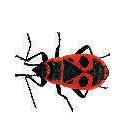


like lime trees because one of their favourite things to eat is old, dried lime tree seeds.
This seems a bit odd. Most bugs are equipped to deliver a hypodermic-like instrument into the sap-system of your favourite plant, or a suitable crop, and draw the nutrient juices out to feed itself, thus weakening the host and substantially curtailing its yield. Thus it is a pest, and is persecuted by gardeners and horticulturalists alike. Not so the gendarme. It chooses dried seeds, dead insects, (sometimes of its own species, but so what?) and other items surplus to requirements, injects a digestive fluid, then sucks up the result as food.
The only real nuisance that these harmless creatures are capable of is getting into your home. This is usually accidental, as there is nothing (apart from a tasty dead fly) that they would find to interest them. However, they sometimes crawl in through narrow cracks (they are ideally shaped to do that) and can be hard to get out again. Also, I am told that they leave red stains if you crush them, so don’t crush them. As I have asked before, if you don’t like insects in your home, why did you come to live in rural France?
ByMikeGeorge
Mike George is our regular contributor on wildlife and the countryside in France. He is a geologist and naturalist, living in the Jurassic area of the Charente

The proliferation of these charming little creatures seems somehow surprising, given that they are so numerous and inoffensive. One would think they would be predated out of existence. However, they are not, and the reason is hinted at by their colouring. They sport a pattern of red and black patches, a pattern that is sometimes likened to an African mask, with big circles on the stumpy fore-wings. This combination is normally a warning to a predator that the potential prey can hit back, being either aggressive, armed with a weapon, disagreeable in taste, or even actively toxic. In the case of the gendarme, it seems that it is mildly disagreeable in taste, and, like many bugs, can also eject unpleasantsmelling fluids if seriously annoyed. However, close observation of birdbehaviour has suggested another protection.
They do enjoy the sun, however, and can be seen congregating in red clumps on the boles of lime trees, moving around to follow the sun on the convex trunk
Also, gendarmes are not given to flying around making annoying whirring noises. The wings of nearly all gendarmes are half-length, and are not much use for sustained flight. Some even have wings that are undeveloped. Full-length winged specimens are known, but are scarce.
Few people living in Britain have ever seen one. There is a tiny colony established in Devon, but I lived there for 30 years and never saw any. Occasional specimens turn up elsewhere, probably arriving accidentally in cars and crates, but do not establish themselves. The theory is that Britain is too wet for them, because they are found in Europe at higher latitudes than Southern England. How does it live?
It’s certainly not cold that worries them. They will hide in the dead leaves in late Autumn to avoid the frost, but will pop up even in January if it gets warm enough. They do enjoy the sun, however, and can be seen congregating in red clumps on the boles of lime trees, moving around to follow the sun on the convex trunk. They
In all horticultural respects, however, the gendarme is officially not a pest, and should if anything be encouraged. Not that it needs much encouragement!
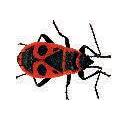
The Gendarme in Love and War

Come spring, the gendarme engages in enthusiastic mating. You will see them circulating like boulevardiers on the pavements, seeking a mating partner. However, having found one, they will not slope off to the nearest boudoir but couple-up and wander around in broad daylight linked end-to-end. For gendarmes to stay thus linked for 24 hours is not unusual, but some have been recorded as staying linked for 7 days! Why this should be is not fully clear, and the suggestions that have been made are not the subject of family magazine reading.
It seems that most of the birds that would eat a gendarme are not unduly put off by the taste and even the smell. However, they are confused by the mass congregation of the bugs, which produces a sort of de-focussed red blob circulating near the ground. This is beyond the bird’s wit to analyse, and it leaves the mass alone out of a desire to avoid possible trouble. Another possible defence is that it is mimicking something else. There are several types of mimicry in nature. In one, Müllerian mimicry (named after Fritz Müller, who described it), several dangerous prey species mimic one another so the predators, having learned to avoid a certain set of markings, will avoid the other dangerous prey animals without having to do any more learning. The other is Batesian mimicry (named after Henry Walter Bates, who described it), in which harmless prey animals mimic a dangerous prey animal in the hope of getting away with it. Maybe our little friend is following one of those two strategies. But which? And what is it mimicking?
Our friendly little bug is in fact a very interesting animal, and in its way quite charming. Next time you find your way strewn with happily mating gendarmes, feel free to join in the “gendarme tango” that we who appreciate their company will indulge in to avoid crushing them out of existence!


etcetera 47
nature
ONE OF THE THINGS THAT SEEMS STRANGELY COMFORTING IN FRANCE IS THE EXISTENCE OF A CURIOUS, HALF-INCH LONG, RED AND BLACK INSECT
There are more scams doing the rounds, this time targeting people via SMS (text messaging). One claims to be from Assurance maladie, asking you to follow a link and enter your social security number (on your carte vitale). Please remember that while Assurance maladiemaycontactpeople from time to time via text, they will never ask for personal information (or if


they do, it will only be part of it, e.g. the last 6 digits). Ifyoudofollowlinks,make sure you check the URL of the website, you can often spotslightdifferencesinthe address, like an additional hyphen. The second SMS scam we’ve heard about recently is one claiming to be from ANTAI (Agence nationale de traitement automatisé des infractions) asking you to follow a link to pay a fine of 35€.





EYE TESTS MORE ACCESSIBLE


No doubt many of you have experienced long delays when booking an eye test here in France (some choosing to get them checked in England, as you can walk in to places!). The law has now been relaxed, allowing people aged between 16 and 42 to have eye tests at opticians, as long as you have a ophthalmologist’s ordonnance that is less than 3 year’s old. There is a handy tool on the ServicePublic.fr website, you simply enter your details (e.g. ‘Lunettes’ or ‘Lentilles’, your age etc) and the results will advise what you need to do. Visit: www.servicepublic.fr/particuliers/vosdroits/F33950
We were sad to hear that The Bugle newspaper has printed its last edition. Steve andtheteamhaveworkedsolidlysince2009, providingEnglish-speakerswithregionaland relevant national news every month. A big ‘chapeau’ to Steve for all his work and dedication over the years, you’ll be missed.
In January, a gorgeous husky-mix named Bailey found herself lost in her new neighbourhood in Texas. Bailey’s new owners were distraught and posted messages on social media in hope to find their new family member. Imagine their delight 36 hours later when they discovered that Bailey had found her way back to the rescue centre they had adopted her from, a 10-mile journey. Bailey is captured here on the centre’s mobile phone app, ringing the doorbell with her nose at 1.45am.

latest news 48 etcetera
CLEVER POOCH FINDS WAY BACK TO RESCUE CENTRE
Credit –Animal Rescue League.
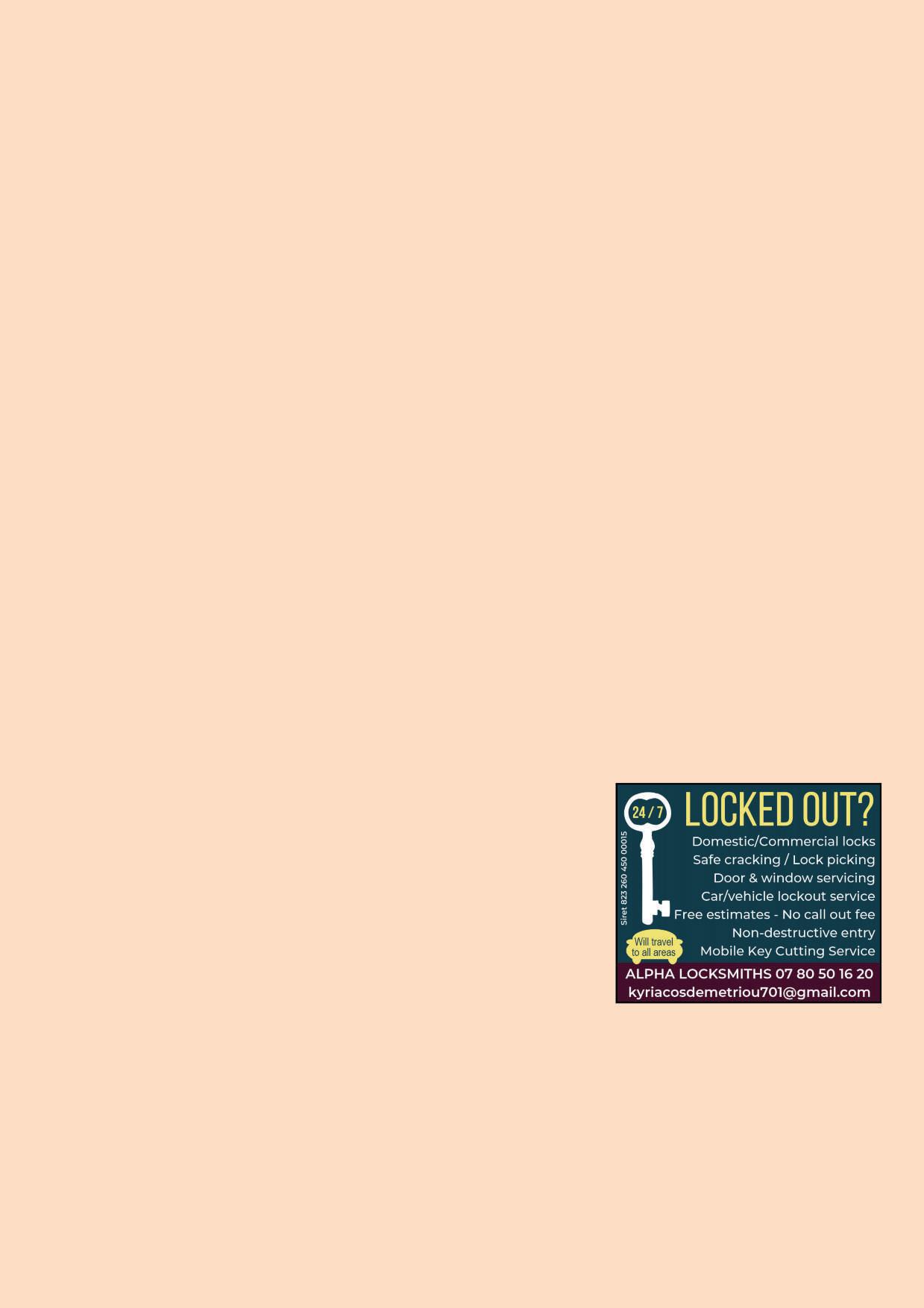












Contact Nick on email: nickthesweep@gmail.com or T. 05 45 71 33 36 Siret 81968203000013 ● Certificates issued for every sweep ● Over 10 years’ experience. ● Depts. 16, 17, 79, 86 ● Registered Chambre de Métiers et de l'Artisanat Chimney sweep Chimney sweep EI home & specialist etcetera 49 www.etceteraonline.org AdvertiseYour Business For as little as 35€ ttc Oven Cleaning Specialist Carpet/Rug & Upholstery Cleaning Using BIODEGRADABLE products Your oven will look shiny and new again Call Paula: 06 95 84 12 95 paulapowell@hotmail.co.uk www.facebook.com/foureclat PLUS
No need to head to your local distribution point, join our evergrowing list of subscribers and we’ll arrange for etcetera magazine to be delivered to your door every month. That’s 12 editions a year!





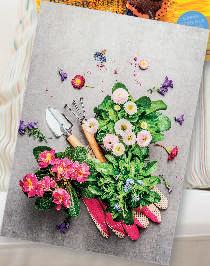



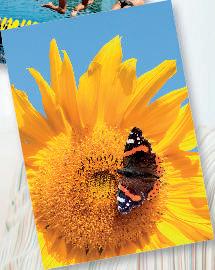




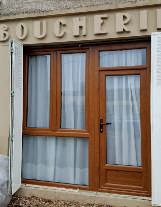
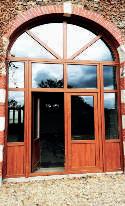


home and specialist 50 etcetera Affordable UK Designs UPVC & Aluminium Double Glazing, Fitted Kitchens www.affordableukdesigns.com Free plan, design and costing throughout South-West France - Other areas by arrangement UPVC windows, Doors & Conservatories in all colours and styles Aluminium and UPVC Bifold Doors Made to “A” Grade spec in French styles Siret: 513 577 809 00017 T: 05 49 42 99 41 ~ M: 06 63 71 09 81 Email: scott.braddock1@yahoo.com
Annual subscription France 55€ / UK 55€ www.etceteraonline.org Become a Subscriber! YOUR COMPANION FOR LIFE IN THE FRENCH COMMUNITY
Bonjour one and all. I hope you’re keeping well and are ready to embrace spring. I for one am glad it’s upon us. I can’t stand winter. There’s probably some good environmental reasons for it that I have no intention of looking up, but when you’re on a roof with freezing cold hands and the wind is blowing up your trouser legs, I can tell you that it is not appreciated one little bit. Anyway, let’s look forward to warmer days. Are we ready to go? Let’s do this thing as overly keen participants on reality TV shows say.
I really want to stop, but I can’t. Freesat is not the same as Freeview. Do not buy a Freeview box for UK TV reception.
BBC is going to go high-definition (HD). In fact, it may have already happened depending on when you read this. This means that for those who watch their preferred regional BBC News in crappy old standard-definition, it’ll soon look a whole lot better. However, that is only if you have an HD satellite receiver and an HD TV connected via an HDMI cable. A scart lead won’t do it. This applies to Freesat, Sky, and all generic free-to-air receivers. For those with an old non-HD receiver, you will see ‘BBC One Nightlight’, a UK-wide
BBC is going to go highdefinition (HD)
version of BBC One with information about the SD switch-off. If you do have an older, non-HD receiver, it might be a good time to consider an upgrade before you lose the service.

You may also have noticed that ITV now has HD versions of ITV1, 2, 3, & 4. If your receiver hasn’t picked them up already, give it a re-scan.

Despite modern TVs having mostly HDMI sockets, some still do not have enough to meet people's needs. What do you do if your TV has 3 HDMI sockets but you want to connect 5 devices? You buy an HDMI ‘commutateur’. These have multiple HDMI ‘in’ sockets and then 1 ‘out’ which goes to the TV. You can then control the commutateur with a remote control and choose which of the devices you wish to see on the TV screen. In this example, it would also leave you with 2 spare sockets on the TV!
Please remember I have moved (See my advert for details.)






STUART WALLACE SATELLITE TV
THE FRENCH HOUSE
getting connected Arthur Smith (EI) ~ Harlequin TV ▪ UK free-to-air/ Freesat ▪ French TV - TNTsat/Fransat ▪ Set up Netflix/Amazon Prime etc ▪ Internet via 4G & 5G ▪ CCTV & alarm systems ▪ Installations & service E. harlequintv1@gmail.com T. 06 06 60 46 97 www.harlequintv.fr Est 2007 Covering 16, 23, north 24, east 86, & 87 etcetera 51














Simple jobs Complete renovations New builds Conformity checks Emergency Call outs Fully insured 10yr guarantee I offer free & friendly advice so please don’t hesitate to contact me. Hedley Marsh 86150 Moussac sur Vienne Tel: 05 49 48 35 49 Mobile: 06 45 74 25 36 Email: hedleymarsh@orange.fr I offer free & friendly advice so please don’t hesitate to contact me Siret: 51190455900024 getting connected CHARLES HODENCQ Electricité Générale French Electrician - fluent English Speaker Based in Bellac - covering 87 & parts of 86,16 & 23 For all your electrical needs - safety checks, re-wires, new builds, upgrades and complete renovations 05 55 68 62 26 / 06 24 27 01 86 charleselec@gmail.com Siret No: 503121279 00015 PC repair on house calls PC building on demand We sell hardware & peripherals ESET SECURITY BROADBAND INSTALLATION SOFTWARE RETAILER ASSISTANCE ON SITE Year round maintenance • Contracts on request Tel: 05 55 78 24 86 Email: contact@homecallpc.com www.homecallpc.com 87150 Champagnac La Riviere OPEN MON TO SAT 9AM / 8PM Homecall
PETER AMOR ELECTRICIAN Large or Small projects New Builds Total Rewires (Inc Three-phase) Adding Sockets/Lights Conformity Inspections T. 05 49 91 85 54 peter-amor@orange.fr Contact Paul Ellis: Tel: 09 62 68 09 06 Mob: 06 70 97 59 56 Email: paul.gill@wanadoo.fr All electrical installations inc: � Domestic - renovation & new build � Commercial � Smart installations (thermostats, cameras etc.) � Data & communications / Wi-Fi solutions � Air conditioning Siret 452 755 390 000 13RM 8601 Regions: 16, 36, 79, 86 & 87 : EV home charging stations Read the digital version at www.etceteraonline.org 52 etcetera
PC










getting connected etcetera 53
getting connected / artisans


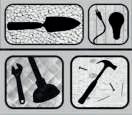




Bathrooms & En Suites / Plasterboard and Plastering / Water Mains & Drainage / Heating Installation Oil, Wood Stoves & Pellet Burners / Servicing & Repairs T: 05 45 89 38 02 E: simon.kershaw@wanadoo.fr siret 440 419 018 00013
artisans 54 etcetera Andrew Hadfield 05 55 60 72 98 07 81 53 71 91 dandahadfield@aol.com siret: 53229047500013 Troy Davey 05 55 60 47 78 06 10 49 49 57 troy.davey@orange.fr siret: 49895173000015
aspects of building work undertaken: � Renovations
Barn Conversions
Plasterboarding / Plastering
Brick/Blockwork/Stonework/Repointing � Tiling Based 87330 References Available
SERVICE Steve’s property maintenance
TYPES OF ROOFING, RENOVATIONS, CONVERSIONS, PLASTERING, STUD WALLS, MAINTENANCE AND REPAIRS T. 05 55 50 52 02 E: lowe.steven@orange.fr Siret 84223310800013
INSURED
Simon Kershaw EI
All
�
�
�
BUILDING / MULTI
ALL
FULLY
HILL TOP TILING









WE NOW CONSTRUCT TIMBER FRAME HOUSES FROM YOUR PLANS, DESIGNS OR IDEAS. FROM SUPPLY & ERECTION TO FULL TURN KEY SERVICE Siret:530 444 496 00018 All other aspects of building, joinery, dampproofing & timber treatment still available 05 45 91 26 61 / 06 56 79 25 58 Sean’s Painting & Decorating Services Interior & Exterior Other work carried out Sean Morrison 06 74 56 89 11 morrisonman8@gmail.com EI PLANT: Diggers 2.2 and 3 tonne / Dumpers Plant Trailer / Roller. TOOLS: Whacker Plate / Electric Breaker / Grinders / Drills Rotovator plus much more - see website www.davesdiggers.com Email: davesplanthire@gmail.com Tel. 06 75 18 09 13 PLANT & TOOL HIRE / MAN & TIPPER siret 5250162590026 Based 79120 Covering 79, 86, 16 & 87
Interior & exterior tiling Travertine, marble, cement Ceramic, porcelain, mosaics Paul Hill (EI) 05 45 24 01 45 hilltoptiling@hotmail.co.uk siret no 523 998 557 00020 hilltoptiling Advertise Your Business From just 39€ ttc per month New edition - every monthContact Sam or Gayle 05 17 36 15 32 editors.etcetera@gmail.com etcetera 55 artisans


artisans 56 etcetera artisans


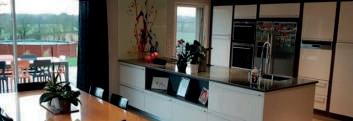








etcetera 57 artisans AC Kitchens & Bathrooms Website: ackitchens.fr Email: antschapman1971@gmail.com 05 17 36 17 74 / Mobile: 06 40 08 08 81 Siret 834026437 00022 Specialist Fitter, over 15 years’ experience PLUMBING - CUSTOM WORKTOP FITTING - CARPENTRY TILING - WOOD & LAMINATE FLOORING - DESIGN SERVICE Freequotes Charente / Haute-Vienne / Vienne Odd Jobs - Inside and Out Do you need an extra pair of hands? CALL Rich Bridgwater (EI) 0602215767 EMAIL richb68@sky.com 1, Chez Coindeau 86250 - SURIN Siret 852 818 863 00015 ADRIAN AMOS EI SPECIALIST CARPENTER/JOINER BESPOKE JOINERY & RENOVATIONS DOORS-SHUTTERS-STAIRS-FLOORINGKITCHENS FULLY EQUIPPED WORKSHOP & 40 YEARS’ EXPERIENCE LOTS OF SOLUTIONS FOR YOUR REQUIREMENTS REFERENCES AVAILABLE UPON REQUEST 05 45 89 02 60 / 06 63 20 24 93 adrian.luke.amos@gmail.com SIRET : 508 248 747 000 18 Painting, Tiling, Wallpaper hanging all types of decorating undertaken Confolens 16 and area 25 years experience. Petits travaux du Batiment Stuart F Park Painter Decorator Contact 05.45.85.78.30 / 06.04.49.04.10 stuart.park@hotmail.fr Siret: 489 199 661 00013 ARCHITECT Eco-Buildings - New Build Renovations - Barn Conversions John Hartie (EI) B.Arch. A.R.I.A.S, R.I.B.A ORDRE des ARCHITECTES no. 073326 Siret. 500 835 189 000 16 Established in La Rochefoucauld for 15 years 14 Rue des Bans 16110 La Rochefoucauld T: 05 45 91 73 90 / 06 81 90 18 87 Email: john.hartie@orange.fr







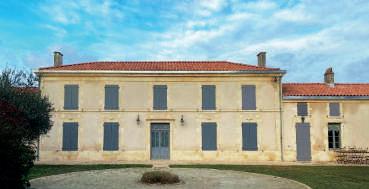





Strictly Roofing - Malcolm Cooke . www.strictlyroofing.fr . 06 35 11 27 31 . admin@strictlyroofing.fr SARL • Tile & Slate Roofing • Insurance claims • Zinc guttering • Box gutters • Listed buildings • Storm damage • Emergency call-out • Special projects • Roof renovations • Chimney removals • Repairs • Velux windows Contact us for your free estimate with over 40 years’ experience in; 58 etcetera artisans
ROOFING SPECIALISTS


Insurance guarantee on all work. 15 years’ experience
CONTACT: PAUL CHARLESWORTH
T: 06 77 90 08 60 E: pmcbatiment@yahoo.fr
Based Saint-Junien. Covering Depts 87-16-24 Siret : 531 655 231 00 11
ALL ASPECTS OF ROOFING / - Zinc / PVC guttering - Anti-moss


RENDERING & POINTING
For a free quotation please contact: Howard (fully bilingual, living in France since 1990, 10 yr décennale Insurance)

05.55.60.23.70 / 06.85.43.13.58 Email: rcc87@live.fr
87,86,16 & 23 Siret: 799 894 860 000 11
Full English Scaffolding Service
Safe, secure, adaptable. Meets all safety regs. Covered by full public liability insurance. Delivered, erected, and dismantled Over 20 years’ experience. Free Quotes.
Siret: 80025145600011 Depts 16, 87, part 24, 17, 79 & 86



07 85 44 26 66 / Eve: 05 45 66 49 87 martin.clare6@gmail.com

etcetera 59
Tel:
Depts:
- Insulation & Plaster boarding - Interior / exterior renovations Roofing / Renovations Roofing / Renovations
SCAFFOLDING
M C
Day:
Fully registered and insured Trading in France since 2007 Call Mark for a free quotation: T: 05 55 44 71 44 / M: 06 78 60 96 16 mumford.toiture@gmail.com Siret no. 493 159 412 00037 One Builder Tout Batiment www.timhartley.fr Registered in France 2001 05 55 60 86 62 / 06 71 78 94 34 Siret 434972303RM87 tim_hartley@hotmail.com Lathus - Le Dorat - Bellac - La Souterraine Dompierre-les-Églises - Saint-Léger-Magnazeix - Magnac-Laval TJ’S Specialist Carpentry & Small Works Siret No: 89423269300016 TJ Doran (EI) - tjs.enquiryfr@gmail.com Depart 87 & surrounding areas 06 16 18 15 96 artisans Read the digital version online plus back copies www.etceteraonline.org


60 etcetera artisans










etcetera 61 Packing&StorageOptions FullandPartLoads RelocationsinFrance Tel: 05 49 07 24 85 Franglais Deliveries Siret 502 021 660 00019 A Family Run Storage Firm in the Heart of the Limousin Call Karen for a quote on 09 66 03 52 89 Brexit-busting Super Low Prices! Secure, dry, insulated storage Established 2007 Now storing cars, caravans and camping cars WW W. W ATSONEUROPEA N . C O .U K EMAIL: ENQUIRY@WATSONEUROPEAN.CO.UK ANDY: 0044 (0) 7876 504 547 CALL TODAY USE OUR ONLINE ENQUIRY PAGE FOR A NO OBLIGATION QUOTE 0044 (0) 1522 686764 OFFICE: 60 DAYS FREE WEEKLY SERVICE UK • FRANCE • SPAIN OUR SPECIALISED VEHICLES CAN PROVIDE SAFE AND SECURE VEHICLE MOVEMENT TO MEET YOUR TRANSPORT NEEDS VEHICLE BETWEEN THE TRANSPORT UK AND FRANCE Supporting Local Business Since 2006 etcetera magazine Call Matt on: 0044 (0)7506 457225 Email: ma.europeanremovals@gmail.com ● Weekly United Kingdom � France � Spain ● United Kingdom - Kent & Home Counties ● Storage La Souterraine / Canterbury / Lincolnshire ● Very competitive rates ● Fully Insured ● 20+ years’ experience Read the digital version www.etceteraonline.org motors & removals
motors & removals











•

Family run business based in France which prides itself on a personal professional service. 7 tonne truck to and from the UK and Europe, we also have a box trailer for larger loads. Our highly experienced staff provide a door to door service with packing and dry secure storage We arrange customs clearance for export and import to and from the UK.


62 etcetera Walton Coachworks 87600 Vayres Nick Walton walton-coachworks@hotmail.com Tel: 07 87 65 53 11 / 05 55 78 67 02 MECHANICAL WORK ON ALL MAKES & MODELS IRRESPECTIVE OF AGE
Welding • Servicing • Diagnosis • Stereo & CD installation • LHD lights & tow-bars fitted
Wheel alignment • Replacement tyres & balancing • Interior & exterior valeting
•
•
Pre-Controle Technique
•
•
24hrs
3-day delivery NEW
check
Top quality tyres (within 48 hrs)
Parts available same day or in
- less common cars
Phil and Jean Evans (+33) 05 55 34 19 46 Mobile (+33) 06 80 75 87 14 Email p.evans@orange.fr Visit www.transitionremovals.net TRANSITION REMOVALS siret: 48252490700011 siret 53821341400013 Depts 16, 86, 87 & 24 (Car & van servicing, Towbars & LHD lights) Any make of Car or Van Fully mobile service at your address E: dixontyres@gmail.com T: 0545 306707 Typically 40% cheaper than French prices Tyre fitting, inc balancing Tracking/Alignment Car/Van servicing : 12€ : 35€ : 75€ + parts CARS MOTORCYCLES LIGHT TRUCKS Free courtesy cars - Cambelts - Clutches Diagnostics - Welding - Electrics Tow bars - Tyre-fitting/Punctures - Air-con CT Preparation Email rmbservicesfrance@gmail.com Tel. 06 01 59 60 75 Siret: 815 114 7720 0016 ST JUNIEN WORKSHOP
We are a professional furniture removal company NOT a man and a van.
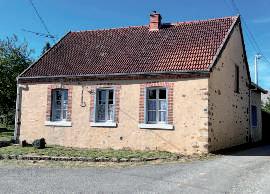
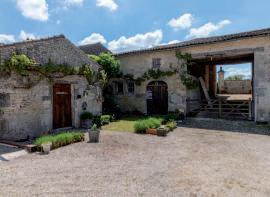

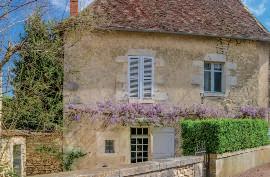
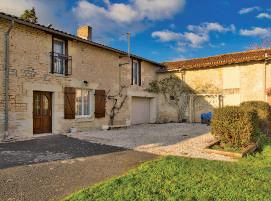
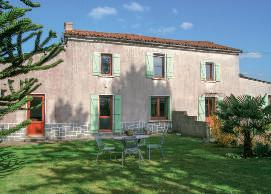
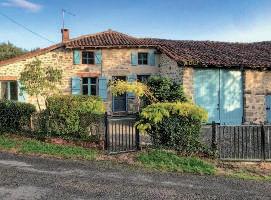
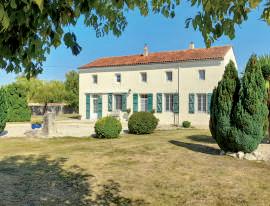
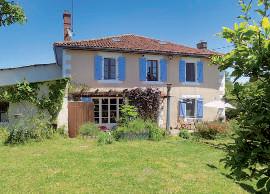

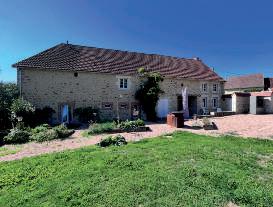


66 etcetera property

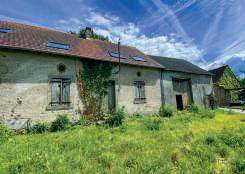
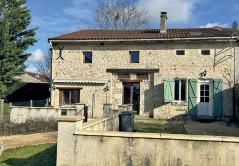
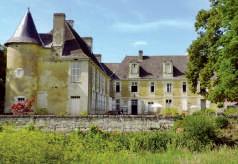


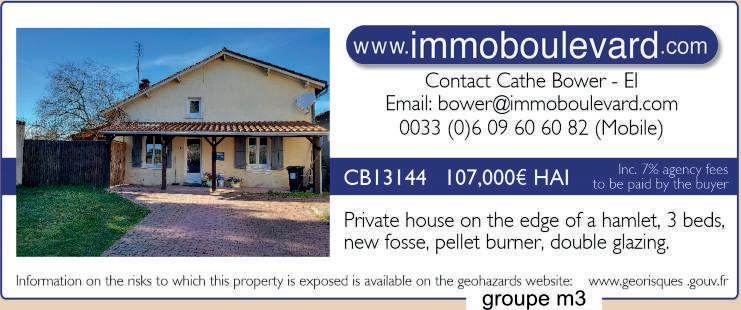

64 etcetera 64 etcetera property

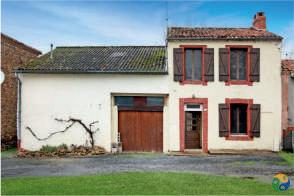







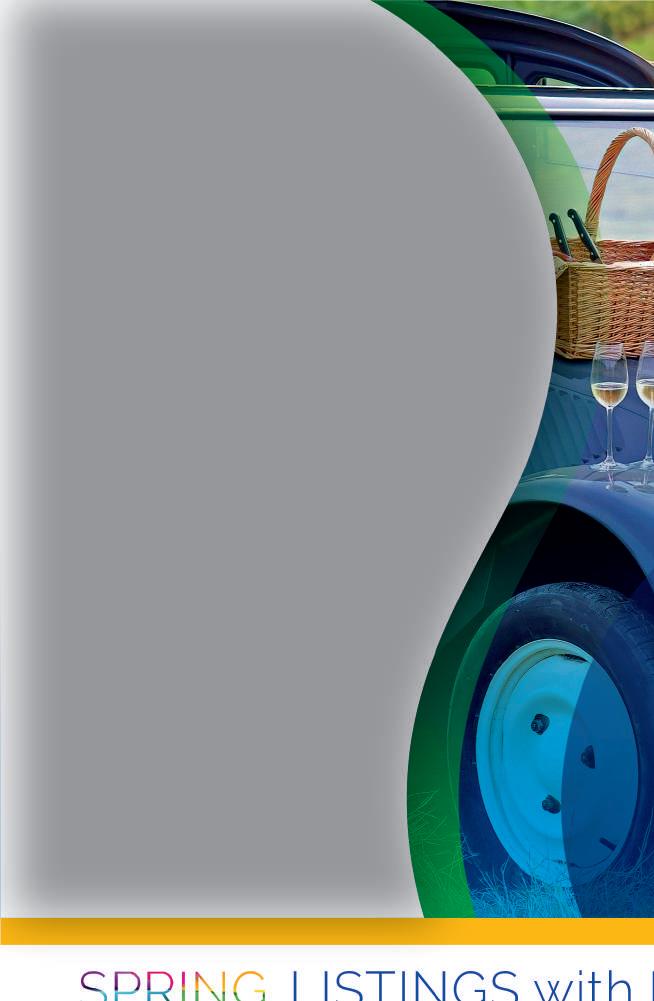





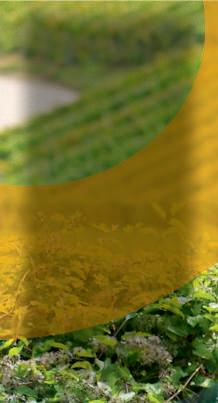


LISTINGS with NEWTON Traditional cottage Manor House with gîte business Mauprévoir NOUVELLE AQUITAINE Ref: MW-3620 - Wonderful, 1830s restored manor house in the country with gîte business, set on 1.2 hectares €495,000 LOOKING TO SELL? Contact us for a free appraisal JOIN THE NEWTON TEAM We’re recruiting in your area Moving you since 1986 Visit us at GRAB YOUR TICKETS ONLINE NOW! All price include Agency Fees








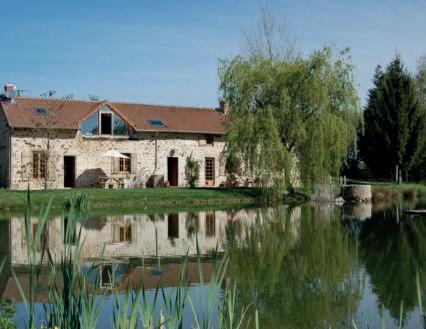
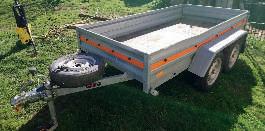

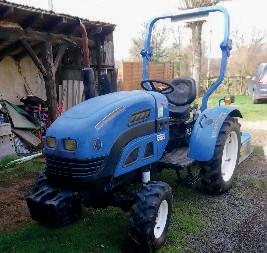
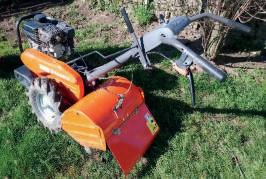
listing 66 etcetera

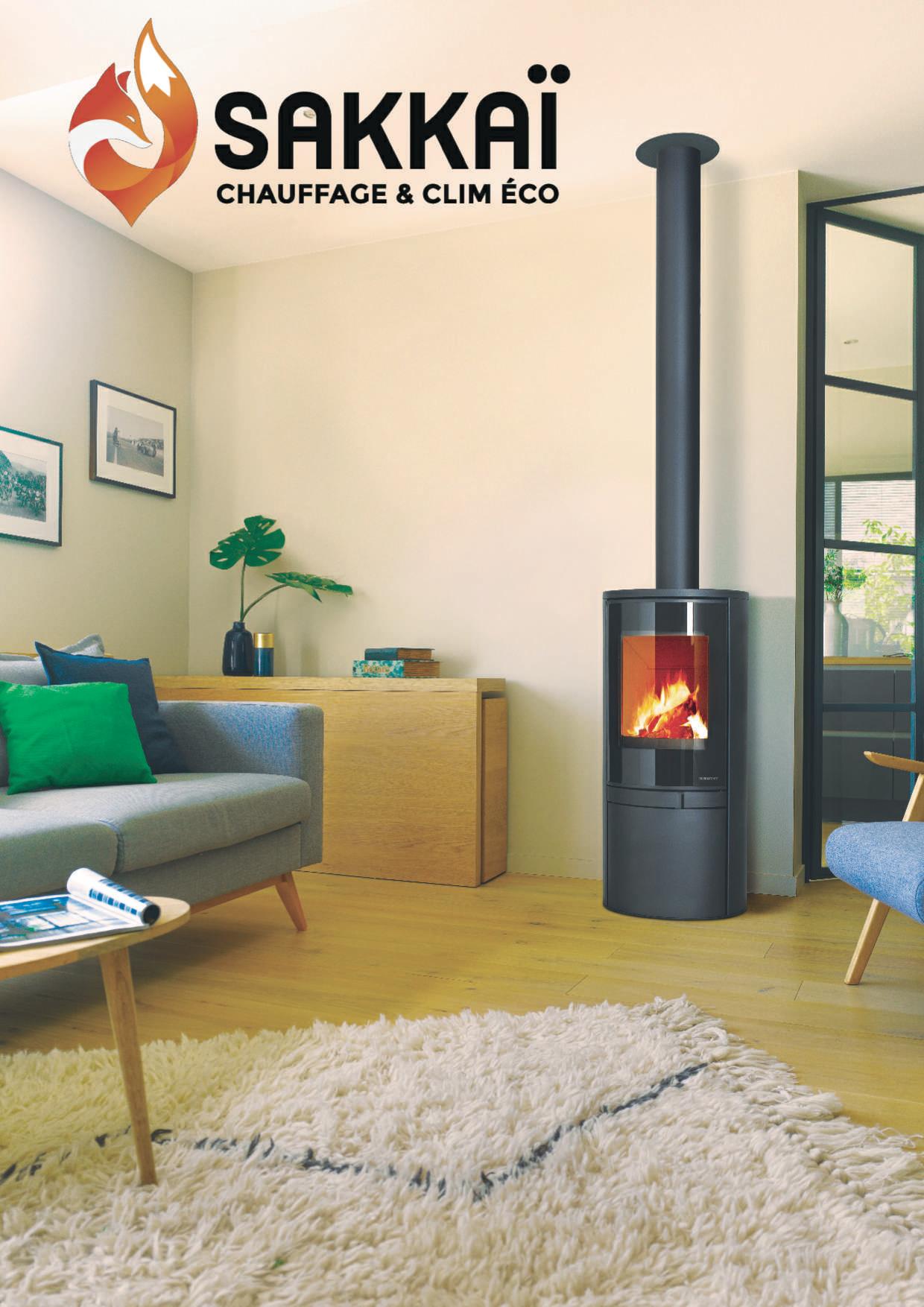























































 BySarahWhiting
BySarahWhiting



























































































































 Nandina domestica 'Fire Power'
Trachelospermum jasminoides
Euonymus fortunei 'Emerald 'n' Gold'
Nandina domestica 'Fire Power'
Trachelospermum jasminoides
Euonymus fortunei 'Emerald 'n' Gold'








































 bee
(Bombylius sp)
A female red admiral (Vanessa atalanta) feeding
A female peacock butterfly (Aglais io) sunning itself on a painted wood board
A beautiful sea of English Sweet Violets (Viola odorata)
The shy flower-head of the Cowslip (Primula veris)
A female Brimstone butterfly (Gonepteryx rhamni) feeding
bee
(Bombylius sp)
A female red admiral (Vanessa atalanta) feeding
A female peacock butterfly (Aglais io) sunning itself on a painted wood board
A beautiful sea of English Sweet Violets (Viola odorata)
The shy flower-head of the Cowslip (Primula veris)
A female Brimstone butterfly (Gonepteryx rhamni) feeding


































































































































































































